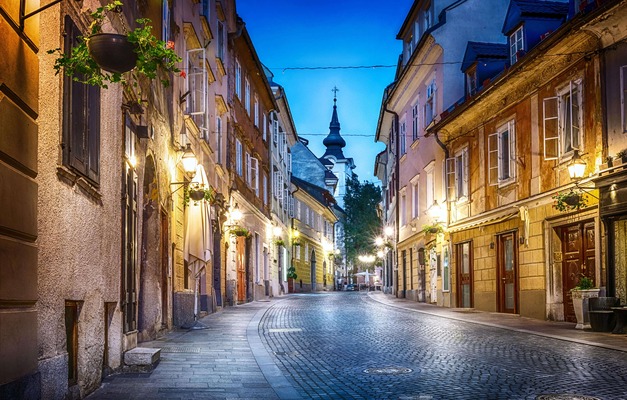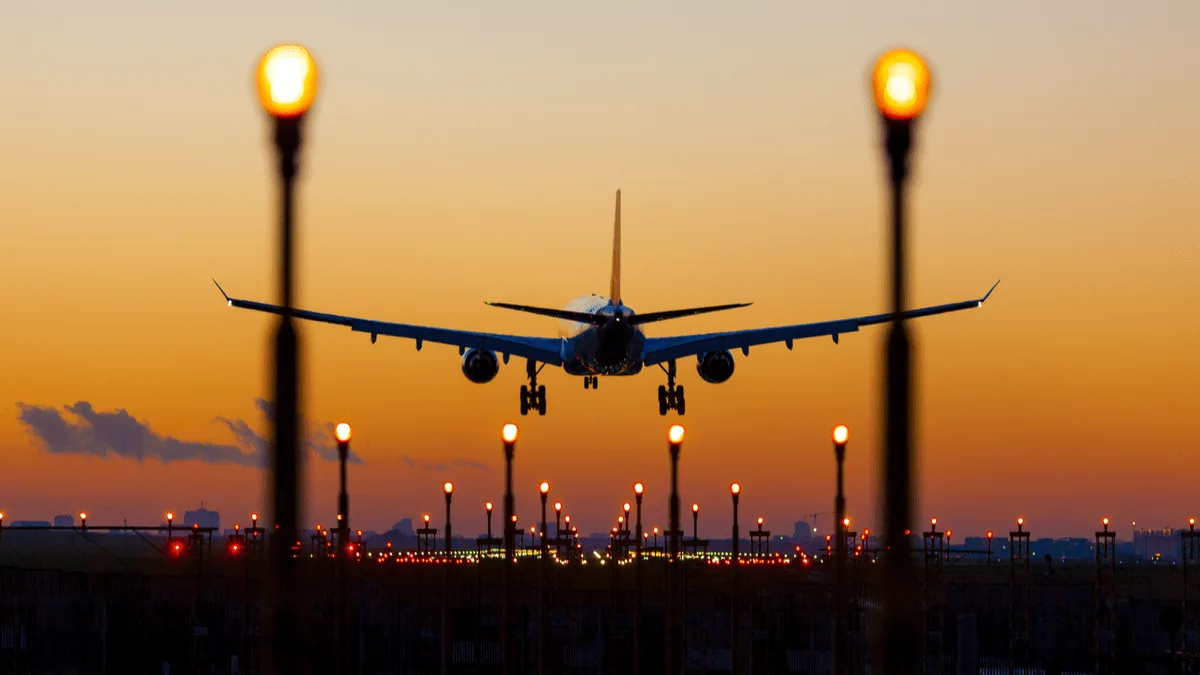
Captivating Croatia & Slovenia: A Week of Coastal Charms and Alpine Wonders
 7 Day Tour of Split and Ljubljana
7 Day Tour of Split and Ljubljana
Overview
Trip Map
Itinerary
Inclusions
Reviews







7 Days 6 Nights
Best Time: Jan-Dec
Nature Lovers
History Buffs
Explore Croatia and Slovenia on a seven-day journey, where the historic allure of medieval towns meets the serene beauty of the Adriatic coastline and majestic mountain landscapes. From the historic, cobble-stoned streets of Split to the enchanting Lake Bled, experience a curated blend of guided tours and insightful self-led explorations. Marvel at the panoramic views from Klis Fortress, unwind on the sun-soaked beaches of Bačvice, and lose yourself in the stunning scenery of Krka National Park. Our detailed travel guidance, accessible via our mobile app, ensures a seamless adventure filled with breathtaking sights and cultural treasures.
- Dive into history with a private tour of Diocletian's Palace in Split.
- Take a catamaran to the sunlit shores of Hvar Island and explore its heritage-rich seaside towns.
- Take an easy hike to reach the cascading waters of Krka National Park’s stunning waterfalls.
- Explore the pristine beauty of Lake Bohinj in the heart of Triglav National Park.
- Wander through Ljubljana’s vibrant, car-free Old Town, a haven of lively cafes and riverside charm.
Explore Croatia and Slovenia on a seven-day journey, where the historic allure of medieval towns meets the serene beauty of the Adriatic coastline and majestic mountain landscapes. From the historic, cobble-stoned streets of Split to the enchanting Lake Bled, experience a curated blend of guided tours and insightful self-led explorations. Marvel at the panoramic views from Klis Fortress, unwind on the sun-soaked beaches of Bačvice, and lose yourself in the stunning scenery of Krka National Park. Our detailed travel guidance, accessible via our mobile app, ensures a seamless adventure filled with breathtaking sights and cultural treasures.
- Dive into history with a private tour of Diocletian's Palace in Split.
- Take a catamaran to the sunlit shores of Hvar Island and explore its heritage-rich seaside towns.
- Take an easy hike to reach the cascading waters of Krka National Park’s stunning waterfalls.
- Explore the pristine beauty of Lake Bohinj in the heart of Triglav National Park.
- Wander through Ljubljana’s vibrant, car-free Old Town, a haven of lively cafes and riverside charm.

Diocletian’s Palace
Castles & Chateaux

Bačvice Beach
Natural Beauty

Veli Varoš & The Marjan Peninsula
Architecture

Triple Bridge
Architecture

Ljubljana Castle
Castles & Chateaux

Prešernov Trg
Architecture

Old Town
Historic Landmarks
Must see sights

Diocletian’s Palace
Castles & Chateaux

Bačvice Beach
Natural Beauty

Veli Varoš & The Marjan Peninsula
Architecture

Triple Bridge
Architecture

Ljubljana Castle
Castles & Chateaux

Prešernov Trg
Architecture

Old Town
Historic Landmarks
Starting from
$1525
per person
 Not included
Not included Secure Your Customizable Trip
Enter your details to embark on a journey that can be tailored just for you.
Start
Travelers
Add Room
Remove Room
Preferred Hotel Stars
Craft Your Own Itinerary
Select your interests and destinations for a trip plan inspired by you.
Trip Map & Itinerary
Enable/Disable Map Scrolling
Click To Make Map Interactive

Trip Timeline
 Edit Details
Edit DetailsArrival
3 nights
Split
Croatia
Shuttle: 5h
3 nights
Ljubljana
Slovenia
Departure
Day-By-Day Itinerary
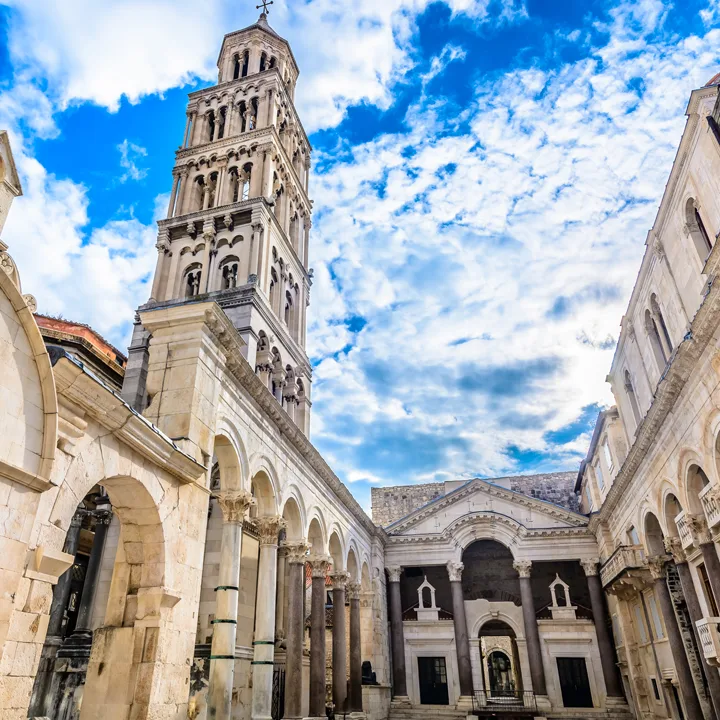
Day 1
Arrive Split
View More
Day 1
Arrive Split



To Be Determined
Transfer from Airport by Taxi or Shuttle Bus
Split has one main airport, Split Airport, also known as Resnik Airport. Taxis are available directly at the terminal exit, or you can arrange a private transfer for added convenience. UberX is also available in Split for those with the mobile app. It will cost about 250 HRK to reach the city by car. Keep in mind that if staying in Old Town, your driver will likely need to drop you off near your hotel as cars are not allowed in the pedestrian zones. If you need help with your bags, you should arrange it beforehand with your hotel or a private transfer. If you want to save money, there is a direct shuttle bus line for 35 HRK which departs from in front of the terminal and drops off at the Split bus station, from where it is a relatively short walk to the historic center of Split. If you really want to save money, the public bus line no. 38 picks up near the airport as well, but of course you'll need to make a lot of stops along the way and it may not be the most convenient way to travel if you have bags.

Day 1
Arrive Split
View More


Day 1
Arrive Split




To Be Determined:
Transfer from Airport
Mid-Day/Afternoon:
Diocletian's Palace
Late Afternoon:
Fishermen's Quarter

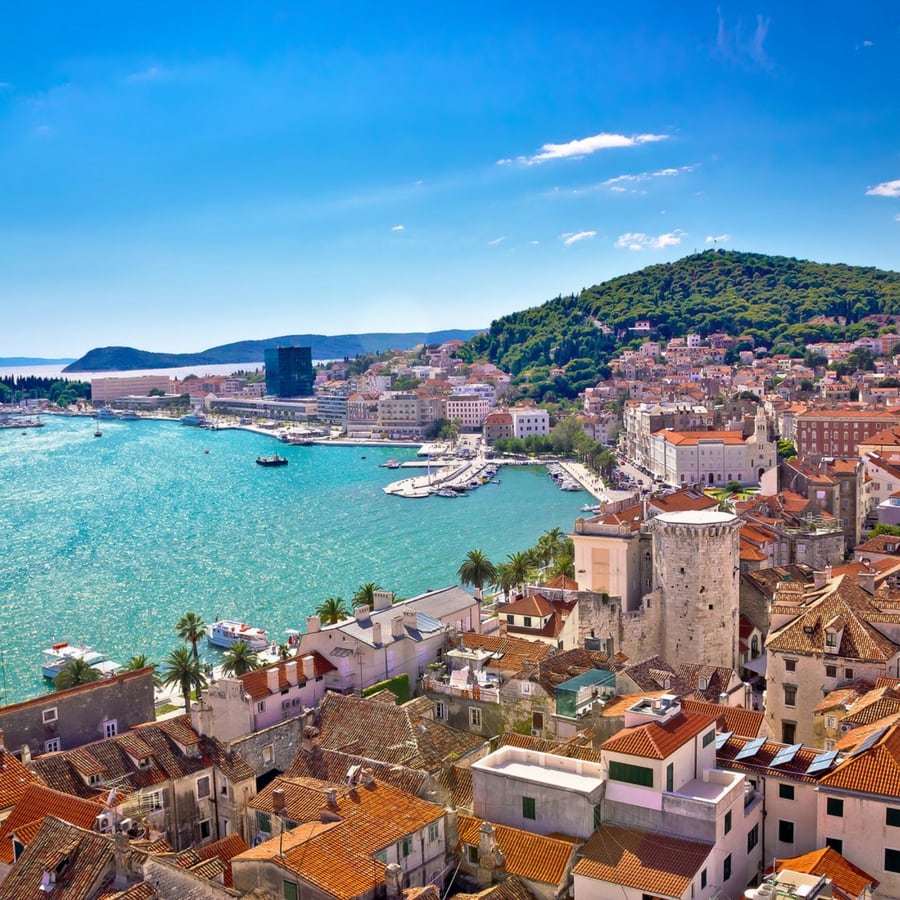
Day 2
Split
View More
Day 2
Split



9:00 AM - 11:00 AM
Walking Tour of Split Old Town & Diocletian's Palace
This two-hour guided tour will take you to the Roman emperor Diocletian's 1700-year-old palace which was built as his personal rest home. Walk from the Bronze Gate through the central hall of the ancient cellars is the main communication line between the busy waterfront promenade, the Riva, and the palace's main forecourt, the Peristyle. You'll also stop by the Cathedral of St Duje, one of the most beautiful cultural attractions on the Adriatic coast, the Roman temple of Jupiter (latterly a Christian baptistry), the fabulous Golden Gate, and the medieval Croatian bishop who introduced the Croatian language in religious services.

Peristyle
See the beautiful courtyard which was once the center of the palace, and is now the heart of Split.
Show More

Bronze Gate and Palace Cellars
Enter this ancient gateway to discover palace cellars used as film sets for Game of Thrones.
Show More

Peristyle
See the beautiful courtyard which was once the center of the palace, and is now the heart of Split.
Show More

Bronze Gate and Palace Cellars
Enter this ancient gateway to discover palace cellars used as film sets for Game of Thrones.
Show More

Peristyle
See the beautiful courtyard which was once the center of the palace, and is now the heart of Split.
Show More

Bronze Gate and Palace Cellars
Enter this ancient gateway to discover palace cellars used as film sets for Game of Thrones.
Show More
prev
next

Day 2
Split
View More

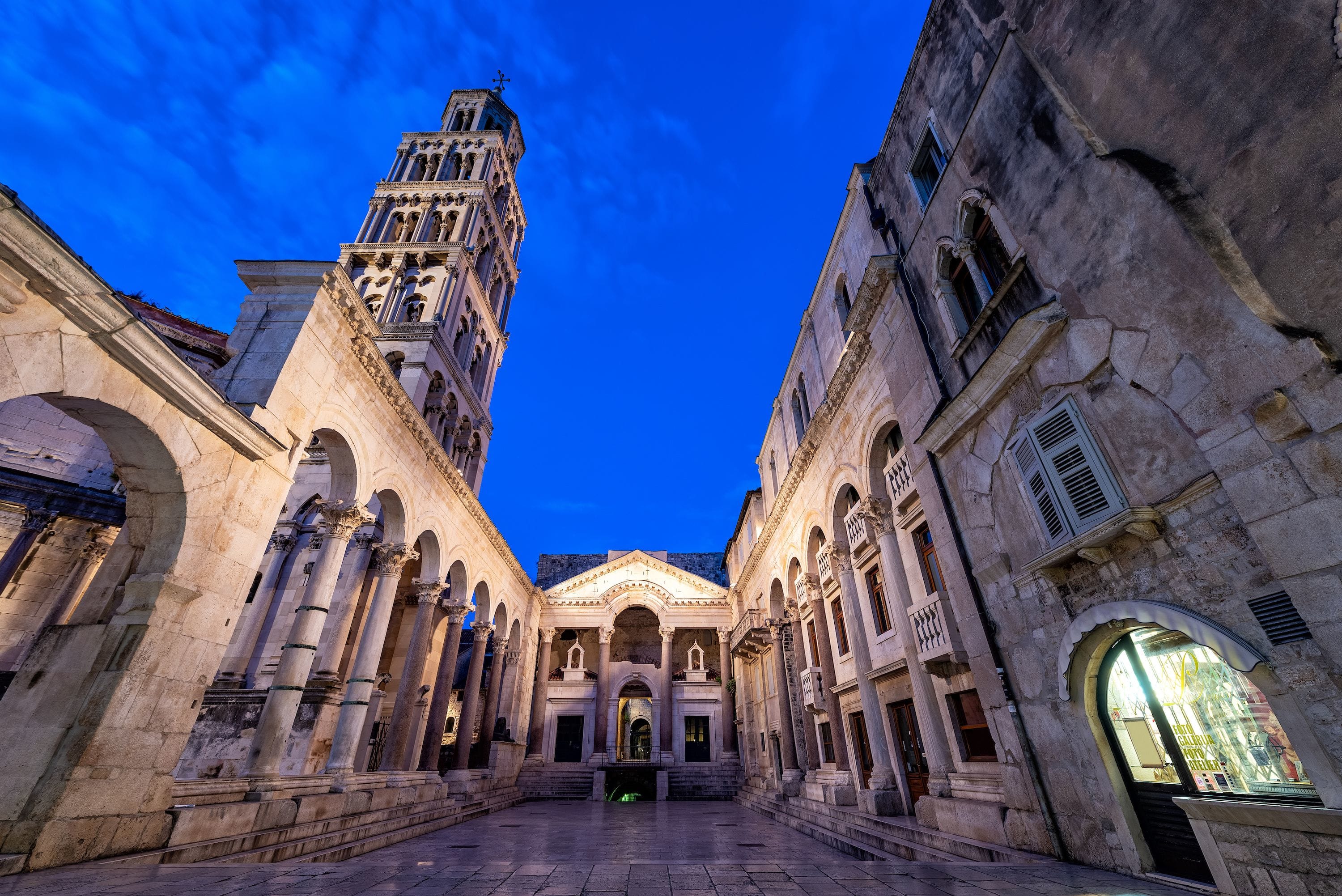
Peristyle
 Highlight of Split Old Town Walking Tour
Highlight of Split Old Town Walking TourSee the beautiful courtyard which was once the center of the palace, and is now the heart of Split.
The Peristyle was the central courtyard of the palace complex and the crossing point of its main streets. The columns around the courtyard were pillaged from Egypt, though the officer in charge of the operation must have forgotten to get some extras as four of the columns are clearly different from the others. There's also a black granite Egyptian sphinx on one side dating from 1500 BC which originally flanked the entrance to Diocletian's mausoleum (other sphinxes around the palace were decapitated by Diocletian to allay his superstition that they posed a threat to his rule). If you sit on one of the red cushions scattered around the Peristyle you'll be approached by a waiter with a menu of very expensive drinks, but it may be worth it just to sit and lap up the history and watch people go by. At the southern end of the Peristyle, steps lead up to a cone-shaped, roofless chamber which once served as the palace vestibule. Visitors would wait here before being summoned before the ex-emperor into his private apartments.
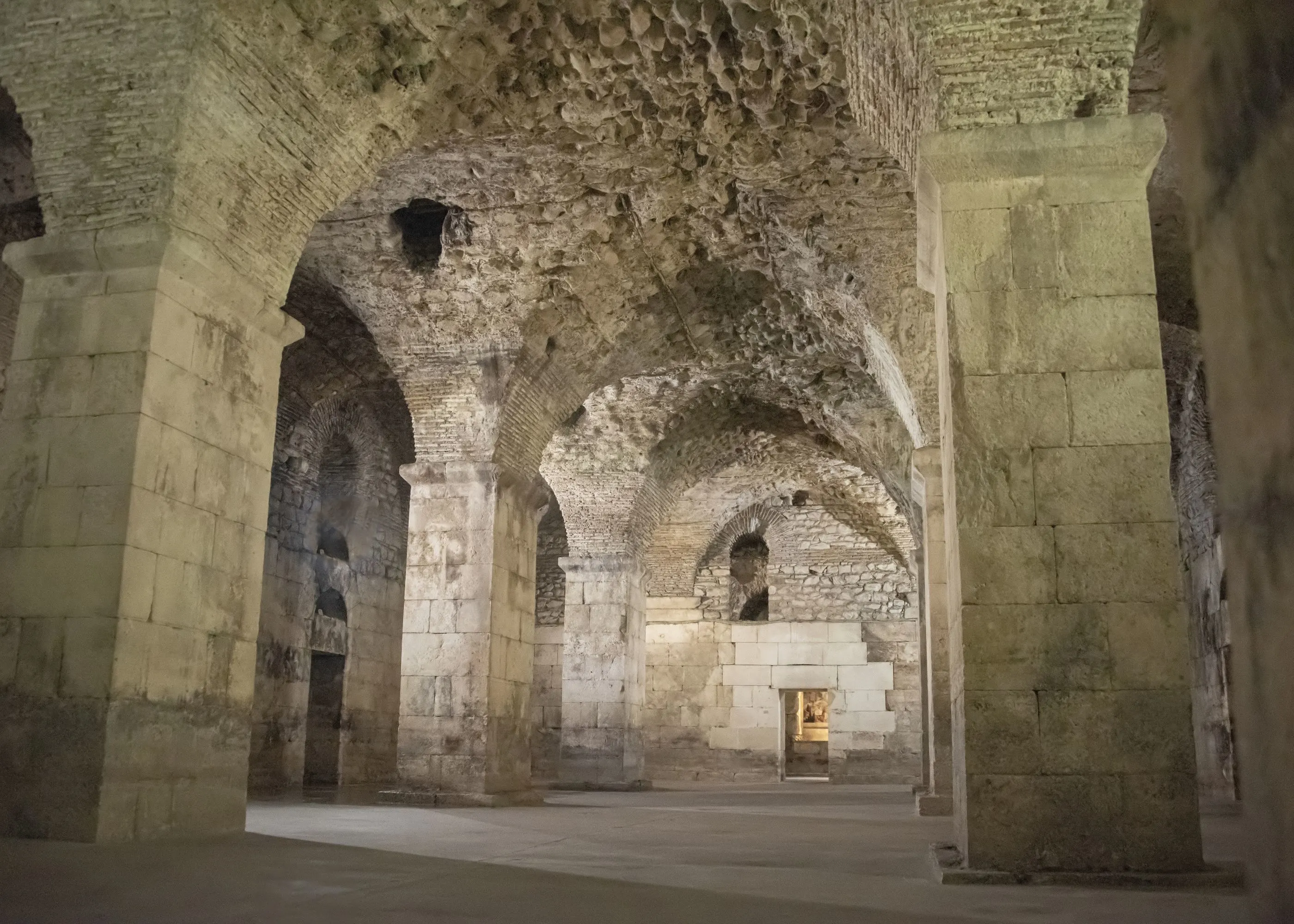
Bronze Gate and Palace Cellars
 Highlight of Split Old Town Walking Tour
Highlight of Split Old Town Walking TourEnter this ancient gateway to discover palace cellars used as film sets for Game of Thrones.
While today about 200 feet (60m) from the water, the Bronze Gate originally sat directly on the sea, allowing boats to pull directly up to the palace. As you enter the gate you will find a mass of souvenir and arts & crafts stalls, but just inside the entrance on either side are the substructures, or cellars of the palace. After the palace fell into disrepair, the cellars were used as rubbish pits. Families occupying the apartments above would simply create holes in the floor and voila, they had an instant trash dump with a seemingly unending supply of space. Of course centuries of trash did eventually them fill up and they were only rediscovered in 1956; the excavations continue to this very day. While entrance to the cellar is not free, it provides an excellent idea of what the palace must originally have looked like, as they're an exact mirror image of the imperial living quarters above. Game of Thrones fans will also be happy to learn that the cellar was used as a filming set, including as Daenerys Targaryen's grand Meereen throne room.

Peristyle
 Highlight of Split Old Town Walking Tour
Highlight of Split Old Town Walking TourSee the beautiful courtyard which was once the center of the palace, and is now the heart of Split.
The Peristyle was the central courtyard of the palace complex and the crossing point of its main streets. The columns around the courtyard were pillaged from Egypt, though the officer in charge of the operation must have forgotten to get some extras as four of the columns are clearly different from the others. There's also a black granite Egyptian sphinx on one side dating from 1500 BC which originally flanked the entrance to Diocletian's mausoleum (other sphinxes around the palace were decapitated by Diocletian to allay his superstition that they posed a threat to his rule). If you sit on one of the red cushions scattered around the Peristyle you'll be approached by a waiter with a menu of very expensive drinks, but it may be worth it just to sit and lap up the history and watch people go by. At the southern end of the Peristyle, steps lead up to a cone-shaped, roofless chamber which once served as the palace vestibule. Visitors would wait here before being summoned before the ex-emperor into his private apartments.

Bronze Gate and Palace Cellars
 Highlight of Split Old Town Walking Tour
Highlight of Split Old Town Walking TourEnter this ancient gateway to discover palace cellars used as film sets for Game of Thrones.
While today about 200 feet (60m) from the water, the Bronze Gate originally sat directly on the sea, allowing boats to pull directly up to the palace. As you enter the gate you will find a mass of souvenir and arts & crafts stalls, but just inside the entrance on either side are the substructures, or cellars of the palace. After the palace fell into disrepair, the cellars were used as rubbish pits. Families occupying the apartments above would simply create holes in the floor and voila, they had an instant trash dump with a seemingly unending supply of space. Of course centuries of trash did eventually them fill up and they were only rediscovered in 1956; the excavations continue to this very day. While entrance to the cellar is not free, it provides an excellent idea of what the palace must originally have looked like, as they're an exact mirror image of the imperial living quarters above. Game of Thrones fans will also be happy to learn that the cellar was used as a filming set, including as Daenerys Targaryen's grand Meereen throne room.

Peristyle
 Highlight of Split Old Town Walking Tour
Highlight of Split Old Town Walking TourSee the beautiful courtyard which was once the center of the palace, and is now the heart of Split.
The Peristyle was the central courtyard of the palace complex and the crossing point of its main streets. The columns around the courtyard were pillaged from Egypt, though the officer in charge of the operation must have forgotten to get some extras as four of the columns are clearly different from the others. There's also a black granite Egyptian sphinx on one side dating from 1500 BC which originally flanked the entrance to Diocletian's mausoleum (other sphinxes around the palace were decapitated by Diocletian to allay his superstition that they posed a threat to his rule). If you sit on one of the red cushions scattered around the Peristyle you'll be approached by a waiter with a menu of very expensive drinks, but it may be worth it just to sit and lap up the history and watch people go by. At the southern end of the Peristyle, steps lead up to a cone-shaped, roofless chamber which once served as the palace vestibule. Visitors would wait here before being summoned before the ex-emperor into his private apartments.

Bronze Gate and Palace Cellars
 Highlight of Split Old Town Walking Tour
Highlight of Split Old Town Walking TourEnter this ancient gateway to discover palace cellars used as film sets for Game of Thrones.
While today about 200 feet (60m) from the water, the Bronze Gate originally sat directly on the sea, allowing boats to pull directly up to the palace. As you enter the gate you will find a mass of souvenir and arts & crafts stalls, but just inside the entrance on either side are the substructures, or cellars of the palace. After the palace fell into disrepair, the cellars were used as rubbish pits. Families occupying the apartments above would simply create holes in the floor and voila, they had an instant trash dump with a seemingly unending supply of space. Of course centuries of trash did eventually them fill up and they were only rediscovered in 1956; the excavations continue to this very day. While entrance to the cellar is not free, it provides an excellent idea of what the palace must originally have looked like, as they're an exact mirror image of the imperial living quarters above. Game of Thrones fans will also be happy to learn that the cellar was used as a filming set, including as Daenerys Targaryen's grand Meereen throne room.
prev
next

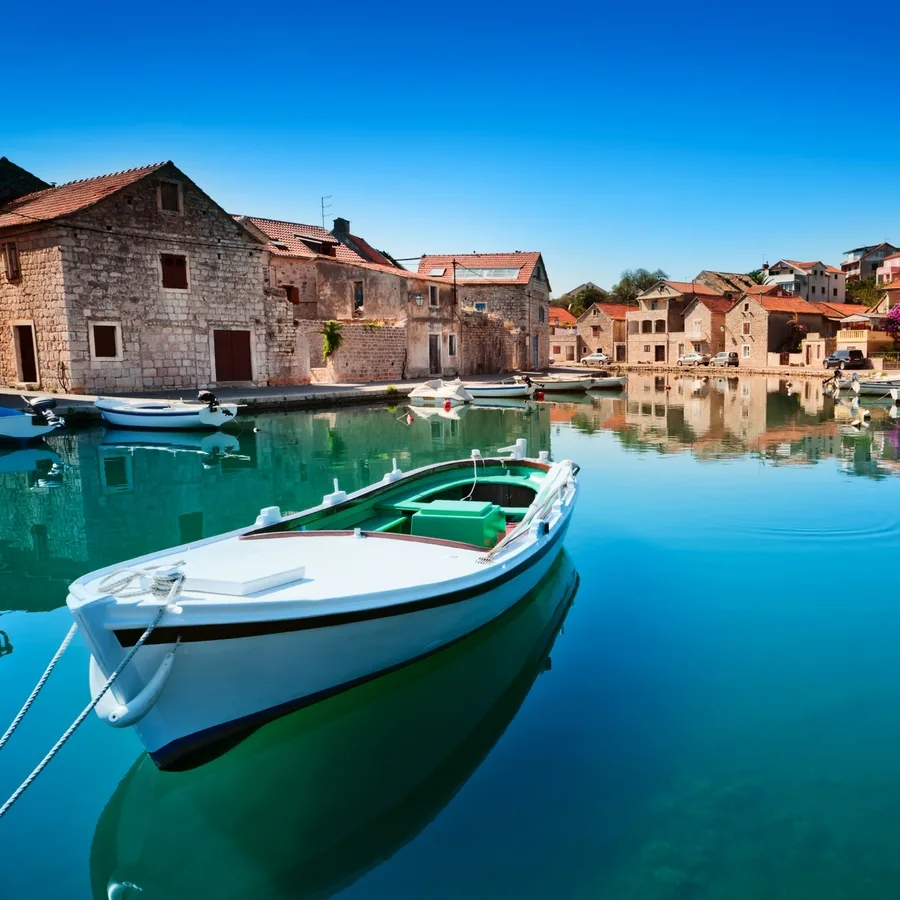
Day 3
Split
View More
Day 3
Split

Morning to Late Afternoon
Excursion to Beautiful Hvar Island
Hvar has a reputation as the Croatian Ibiza, i.e. lots of young people partying as if their lives depended on it, but it's actually much more than that and remains relatively unspoiled and comparatively affordable in relation to the mainland coast. Both of its main towns, Hvar and Star Grad, are lovely medieval towns full of traffic-free alleys surrounded by ancient stone houses; these act as a romantic backdrop to the towns' many cafes from where you can indulge in people-watching and view the fancy yachts filling up the harbor. In the summer, you can take a passenger-only 1-hour catamaran trip directly to Hvar Town. In other months, Hvar is still relatively easy to get to via a 2-hour car ferry to the main island port of Stari Grad. If you do take the ferry, it's still just a short bus or taxi ride to Hvar or Stari Grad - you can even walk to Stari Grad from the ferry port. Keep in mind though that you must be quick off the ferry to catch the bus. If you can afford it, taking a private boat is the ultimate way to experience Hvar, as you can swim, snorkel, and sunbathe along the way. Also keep in mind that while Hvar is happening in the warmer months, it is quite sleepy in the off season. Many restaurants and attractions will be closed, but if you enjoy exploring in peace and quiet, it is the perfect time to visit.

Town of Stari Grad
Stroll the atmospheric narrow streets of this small town nestled at the end of a clear blue bay.
Show More

Pakleni Islands
Hop over to these rocky islands to swim and snorkel in their picturesque little coves and lagoons.
Show More

Arsenal & Cathedral of St. Stephen
Check out where war galleys were once repaired on Hvar's main square.
Show More

Citadel
Climb to this stone fortress above the town of Hvar for the perfect photo.
Show More

Town of Stari Grad
Stroll the atmospheric narrow streets of this small town nestled at the end of a clear blue bay.
Show More

Pakleni Islands
Hop over to these rocky islands to swim and snorkel in their picturesque little coves and lagoons.
Show More

Arsenal & Cathedral of St. Stephen
Check out where war galleys were once repaired on Hvar's main square.
Show More

Citadel
Climb to this stone fortress above the town of Hvar for the perfect photo.
Show More
prev
next

Day 3
Split
View More

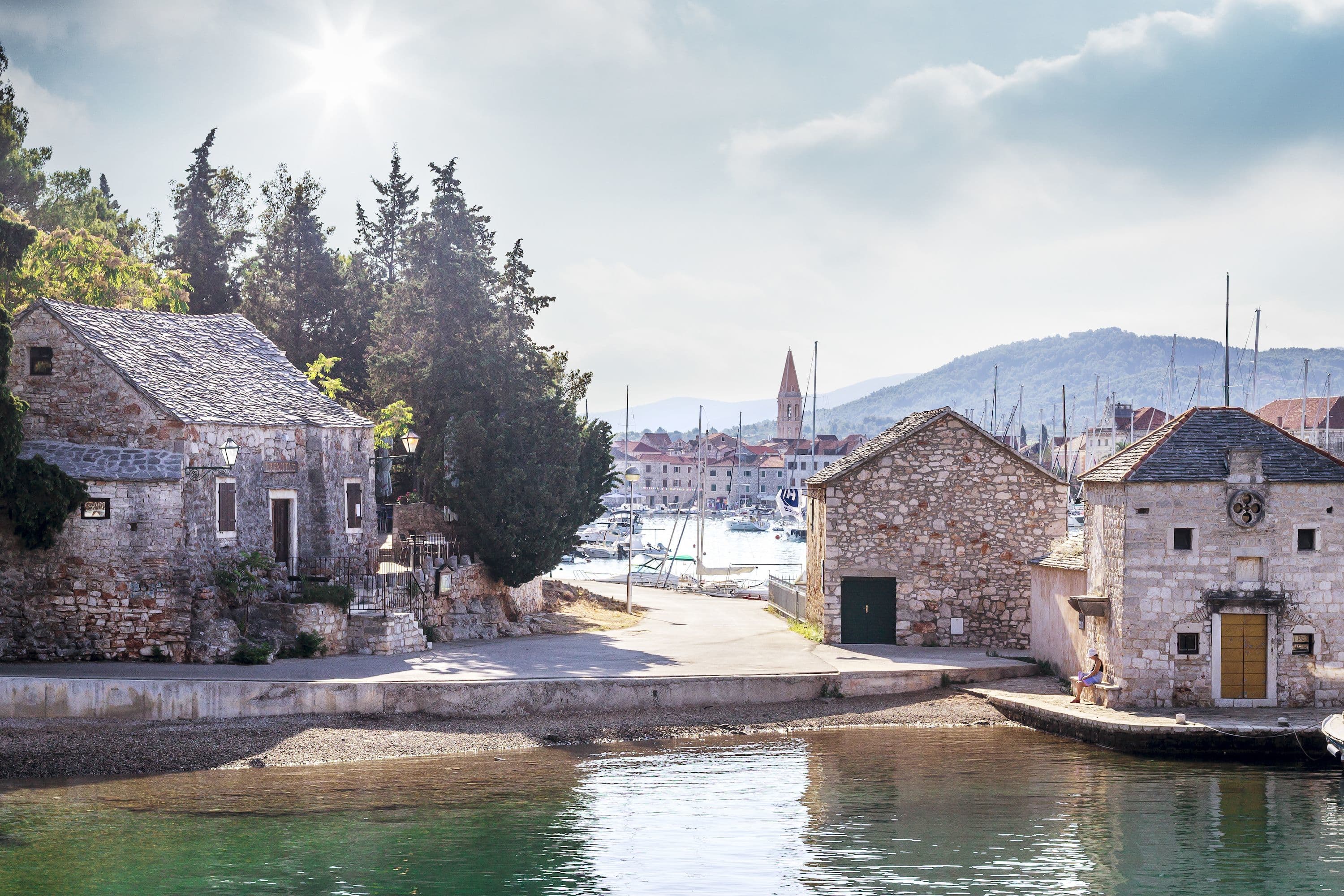
Town of Stari Grad
 Highlight of Hvar Island
Highlight of Hvar IslandStroll the atmospheric narrow streets of this small town nestled at the end of a clear blue bay.
Stari Grad is more laid back and family-oriented than Hvar Town but is becoming more popular with younger crowds and the jet-set as time goes by. Its streets are lined by stone houses decorated with bright window boxes, and there are plenty of small squares to explore that suddenly open up at the end of shoulder-rubbing alleyways. The fertile plain stretching south and west of Stari Grad is one of the few places in Europe where the ancient Greek system of field division has been preserved almost untouched. With olive groves and vineyards divided by a grid of dry stone walls and country lanes, it is easily explored on foot or by bike. A highlight within the town is the summer house and walled garden of the 16th-century poet and aristocrat Petar Hektorović called the Tvrdalj. This simple stone structure purpose-built for quiet contemplation and as a refuge for the locals in time of the attack is built around a central cloister with a turquoise pond packed with mullet. Almost immediately adjacent to the Tvrdalj is the Biankini Palace, an impressively restored Renaissance building that now houses the Town Museum

Pakleni Islands
 Highlight of Hvar Island
Highlight of Hvar IslandHop over to these rocky islands to swim and snorkel in their picturesque little coves and lagoons.
If weather permits, Hvar can be a splendid place for swimming as the sea conditions are truly exceptional, with crystal clear water. If you are hoping for soft sand beaches though, you will be disappointed. Beaches range from "pebbly" to "rocky ledge". A great option is to catch a water taxi (about 50 Kuna per person roundtrip) from the town of Hvar to the forested Pakleni Island, where the best beaches are to be found. The contorted, crooked shorelines of the islands create numerous little coves and lagoons that are nice spots for swimming and relaxing. Sveti Klement is the largest of the islands and hence has the best facilities, but there are restaurants, bars, snack stands, and toilets located near most of the beaches. Snorkeling is also possible at the Pakleni Islands, although generally there are no reefs, as is the case along most of the Croatian coastline. However, visibility is amazing and there are plenty of interesting rock formations. The best option if you are serious about snorkeling is to go with an organized boat tour.
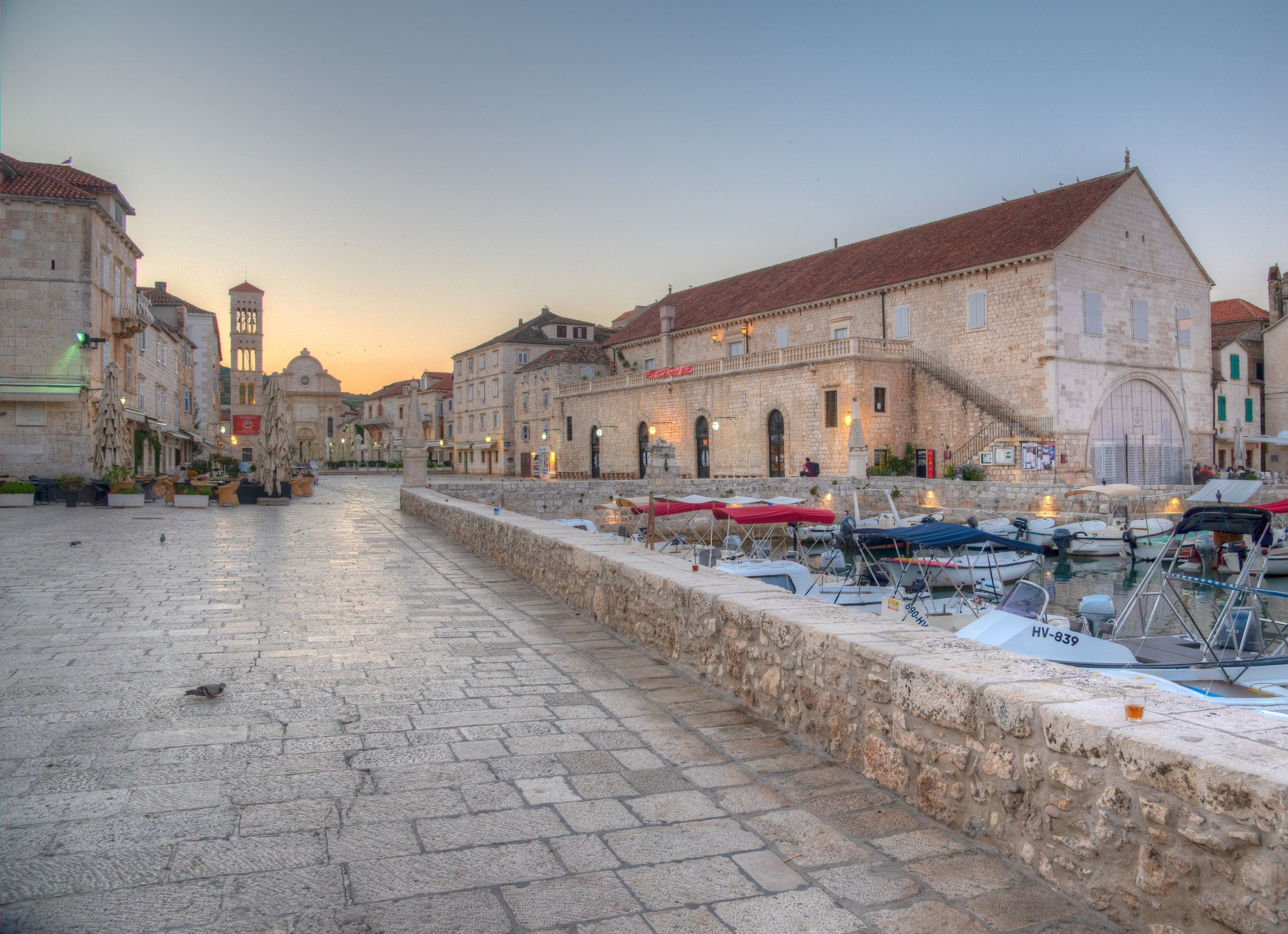
Arsenal & Cathedral of St. Stephen
 Highlight of Hvar Island
Highlight of Hvar IslandCheck out where war galleys were once repaired on Hvar's main square.
There's plenty to see in Hvar Town beginning at the main square, Trg svetog Stjepana (St Stephen Square) where you'll find the 17th century Venetian arsenal in which war galleys were once hauled for repair. The upper story was adapted in 1612 to house the town theatre, one of the oldest Baroque playhouses in Europe. St Stephen's Cathedral at the eastern end of the square is a 16th-century building with a fragile looking four-story campanile. Some of the artwork inside might be worth your time popping in to see. The Bishop's treasury next door contains a small but fine selection of religious.
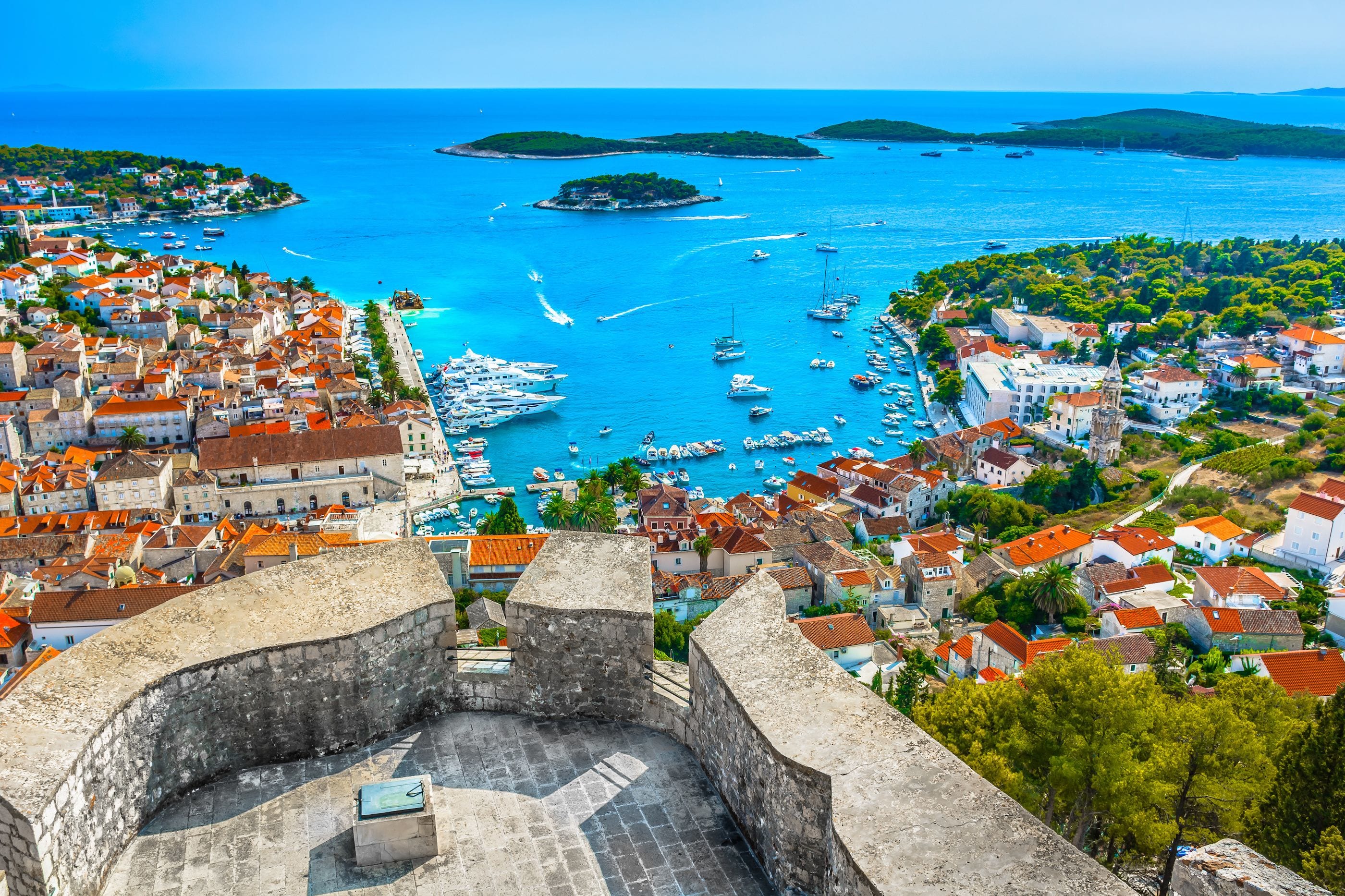
Citadel
 Highlight of Hvar Island
Highlight of Hvar IslandClimb to this stone fortress above the town of Hvar for the perfect photo.
Resting atop of the hill with breathtaking views of Hvar Town and the nearby Pakleni Islands is the Citadel, built by the Venetians in the 1550s but with the help of Spanish engineers, hence it is another name: the Spanish Fortress. It is the perfect spot for a photo of yourself standing on the turrets and overlooking the town and harbor. During the season it is open to visitors for a 40 Kuna entry fee. To reach the citadel just walk up the stairs located next to the Loggia, which is the colonnaded white building located just in front of the port. Once you reach the gardens above the town, then follow a zig-zagging path through the gardens. When you reach a gate in the garden, go through it, instead of taking the other path which is helpfully spray-painted with the word "stop". This will take you to the entrance of the citadel.

Town of Stari Grad
 Highlight of Hvar Island
Highlight of Hvar IslandStroll the atmospheric narrow streets of this small town nestled at the end of a clear blue bay.
Stari Grad is more laid back and family-oriented than Hvar Town but is becoming more popular with younger crowds and the jet-set as time goes by. Its streets are lined by stone houses decorated with bright window boxes, and there are plenty of small squares to explore that suddenly open up at the end of shoulder-rubbing alleyways. The fertile plain stretching south and west of Stari Grad is one of the few places in Europe where the ancient Greek system of field division has been preserved almost untouched. With olive groves and vineyards divided by a grid of dry stone walls and country lanes, it is easily explored on foot or by bike. A highlight within the town is the summer house and walled garden of the 16th-century poet and aristocrat Petar Hektorović called the Tvrdalj. This simple stone structure purpose-built for quiet contemplation and as a refuge for the locals in time of the attack is built around a central cloister with a turquoise pond packed with mullet. Almost immediately adjacent to the Tvrdalj is the Biankini Palace, an impressively restored Renaissance building that now houses the Town Museum

Pakleni Islands
 Highlight of Hvar Island
Highlight of Hvar IslandHop over to these rocky islands to swim and snorkel in their picturesque little coves and lagoons.
If weather permits, Hvar can be a splendid place for swimming as the sea conditions are truly exceptional, with crystal clear water. If you are hoping for soft sand beaches though, you will be disappointed. Beaches range from "pebbly" to "rocky ledge". A great option is to catch a water taxi (about 50 Kuna per person roundtrip) from the town of Hvar to the forested Pakleni Island, where the best beaches are to be found. The contorted, crooked shorelines of the islands create numerous little coves and lagoons that are nice spots for swimming and relaxing. Sveti Klement is the largest of the islands and hence has the best facilities, but there are restaurants, bars, snack stands, and toilets located near most of the beaches. Snorkeling is also possible at the Pakleni Islands, although generally there are no reefs, as is the case along most of the Croatian coastline. However, visibility is amazing and there are plenty of interesting rock formations. The best option if you are serious about snorkeling is to go with an organized boat tour.

Arsenal & Cathedral of St. Stephen
 Highlight of Hvar Island
Highlight of Hvar IslandCheck out where war galleys were once repaired on Hvar's main square.
There's plenty to see in Hvar Town beginning at the main square, Trg svetog Stjepana (St Stephen Square) where you'll find the 17th century Venetian arsenal in which war galleys were once hauled for repair. The upper story was adapted in 1612 to house the town theatre, one of the oldest Baroque playhouses in Europe. St Stephen's Cathedral at the eastern end of the square is a 16th-century building with a fragile looking four-story campanile. Some of the artwork inside might be worth your time popping in to see. The Bishop's treasury next door contains a small but fine selection of religious.

Citadel
 Highlight of Hvar Island
Highlight of Hvar IslandClimb to this stone fortress above the town of Hvar for the perfect photo.
Resting atop of the hill with breathtaking views of Hvar Town and the nearby Pakleni Islands is the Citadel, built by the Venetians in the 1550s but with the help of Spanish engineers, hence it is another name: the Spanish Fortress. It is the perfect spot for a photo of yourself standing on the turrets and overlooking the town and harbor. During the season it is open to visitors for a 40 Kuna entry fee. To reach the citadel just walk up the stairs located next to the Loggia, which is the colonnaded white building located just in front of the port. Once you reach the gardens above the town, then follow a zig-zagging path through the gardens. When you reach a gate in the garden, go through it, instead of taking the other path which is helpfully spray-painted with the word "stop". This will take you to the entrance of the citadel.
prev
next

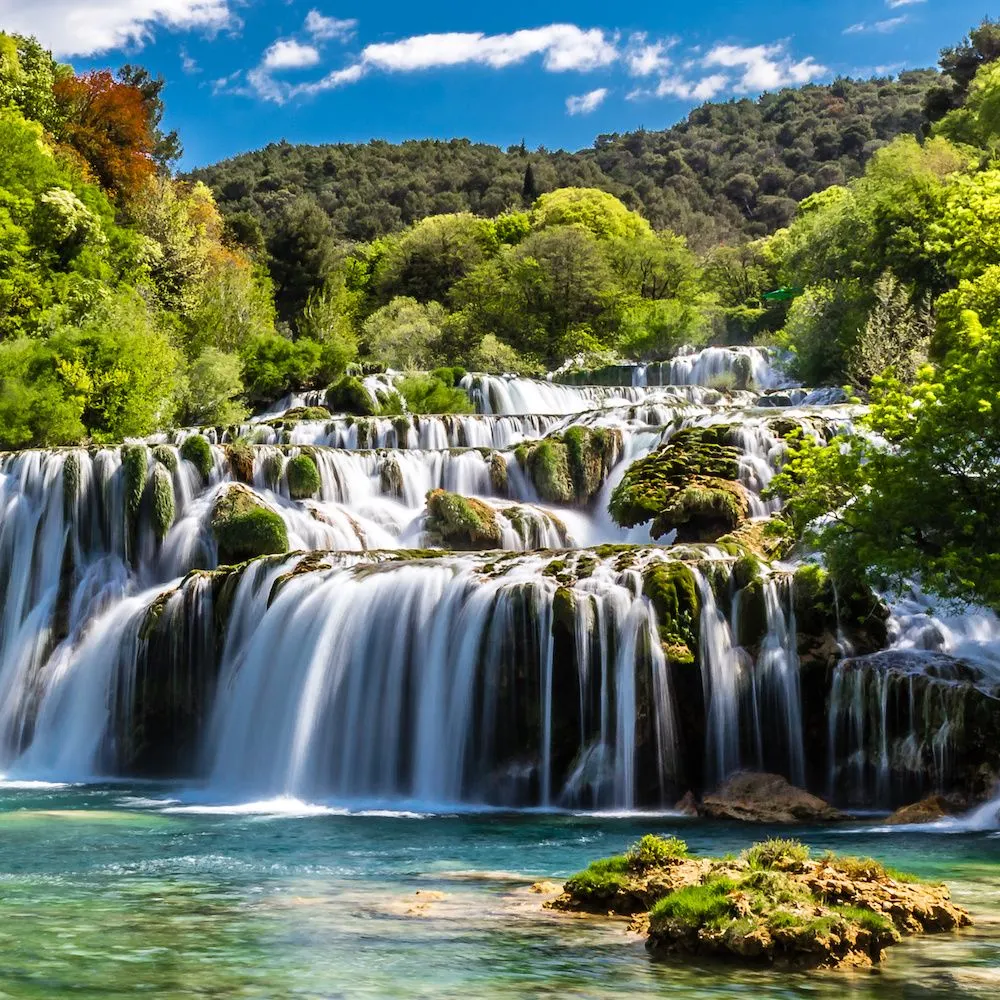
Day 4
Split to Ljubljana
View More
Day 4
Split to Ljubljana


Early Morning to Mid-Day
Excursion to the Krka Waterfalls
While the more famous Plitvice Waterfalls are much larger and get all the press, the Krka waterfalls also pour crystal clear blue water over karst rock formations. And just like Plitvice, they are so beautiful that a National Park was created to protect them. But they also have a couple of key advantages over Plitvice. First of all they are much closer to Split, meaning it is much more manageable to visit them as a day trip. In fact Krka is only an hour from Split, versus a three hour drive to reach Plitvice. Keep in mind though that the waterfalls can only accommodate a limited number of people and the park limits entry. So if you want to be assured of getting in, either get there very early, or book ahead with an organized group. One more thing to remember is that it is not just about swimming - the National Park is also a great place for a hike. Also, don't forget your watershoes if you plan to swim, but please note that you are no longer allowed to swim beneath the main cascading falls.

Day 4
Split to Ljubljana
View More


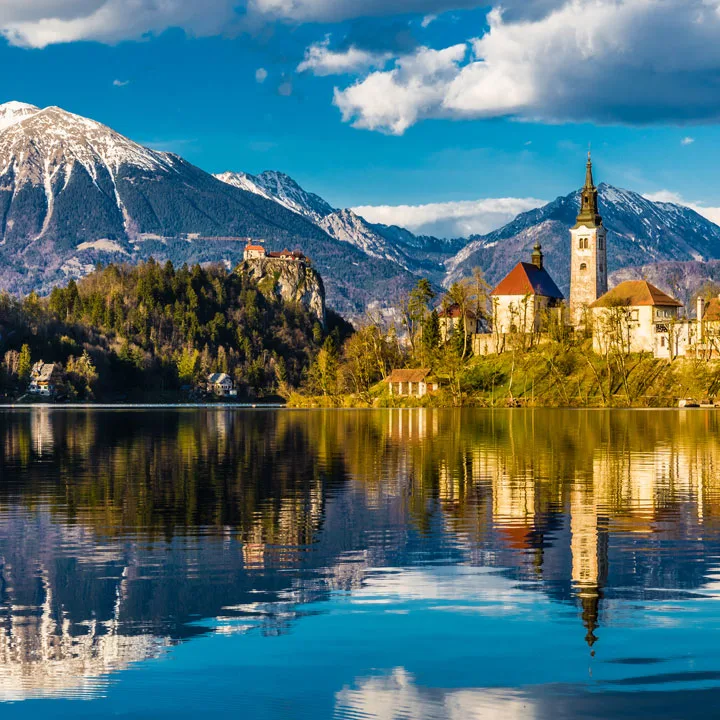
Day 5
Ljubljana
View More
Day 5
Ljubljana

8:00 AM - 6:30 PM
Full Day Small Group trip to Lake Bled, Postojna Cave and Predjama Castle
This full day trip will take you to the main tourist sights of Slovenia including the stunning Bled Lake, Bled Castle, the Postojna Cave, and Predjama Castle, as well as some lesser-known attractions that showcase the wild and mysterious beauty of Slovakia.

Day 5
Ljubljana
View More


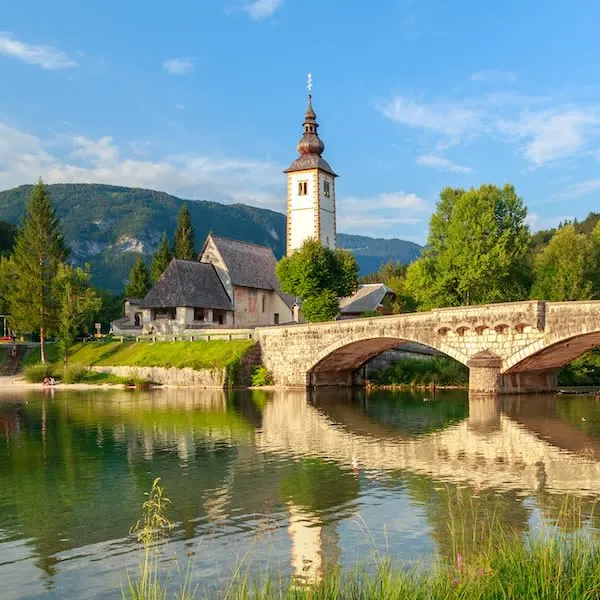
Day 6
Ljubljana
View More
Day 6
Ljubljana

Early Morning to Afternoon
Self Guided Excursion to Lake Bohinj Alpine Nature Excursion
Escape to the serene and majestic Lake Bohinj, a gem in the heart of Slovenia's Julian Alps, on a self-guided excursion from Ljubljana. This excursion offers more than just a visual spectacle; it's also an opportunity to choose from a number of different outdoor activities. to Hike to a waterfall or Alpine peaks, feel the adrenaline rush of rafting down a pristine river, or explore the picturesque landscape by cycling through the valley leading to the lake. Lake Bohinj is a perfect trip for those with adventurous soul, as well as for those seeking extraordinary beauty and tranquility.

Sava Bohinjka River Rafting
Ride the exhilarating rapids of the Sava Bohinjka River
Show More

Mostnice Gorge
Take an easy hike to see the amazing natural sculptures of Mostnica Gorge.
Show More

Savica Waterfall
Hike to the majestic Savica Waterfall, a jewel of the Julian Alps.
Show More

Bohinj Stone Bridge and Boat Docks
Stroll, sail, or soak in the beauty of Lake Bohinj's enchanting waters.
Show More

Bohinj Valley Cycling Path
Pedal through breathtaking valleys and over Alpine foothills.
Show More

Sava Bohinjka River Rafting
Ride the exhilarating rapids of the Sava Bohinjka River
Show More

Mostnice Gorge
Take an easy hike to see the amazing natural sculptures of Mostnica Gorge.
Show More

Savica Waterfall
Hike to the majestic Savica Waterfall, a jewel of the Julian Alps.
Show More

Bohinj Stone Bridge and Boat Docks
Stroll, sail, or soak in the beauty of Lake Bohinj's enchanting waters.
Show More

Bohinj Valley Cycling Path
Pedal through breathtaking valleys and over Alpine foothills.
Show More

Sava Bohinjka River Rafting
Ride the exhilarating rapids of the Sava Bohinjka River
Show More
prev
next

Day 6
Ljubljana
View More

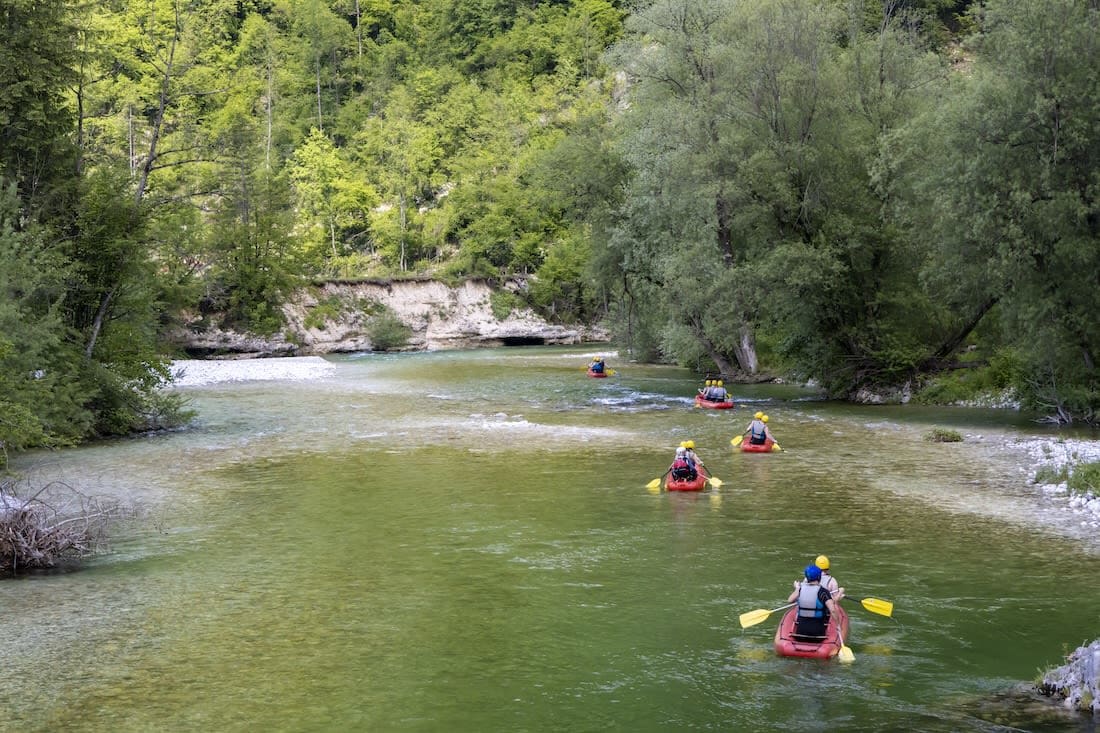
Sava Bohinjka River Rafting
 Highlight of Excursion to Lake Bohinj
Highlight of Excursion to Lake BohinjRide the exhilarating rapids of the Sava Bohinjka River
Experience the thrill of rafting on the Sava Bohinjka River, where the rushing waters have carved a path through stunning Alpine scenery, offering an exciting ride full of natural beauty. But not too exciting - even complete beginners can enjoy this voyage.
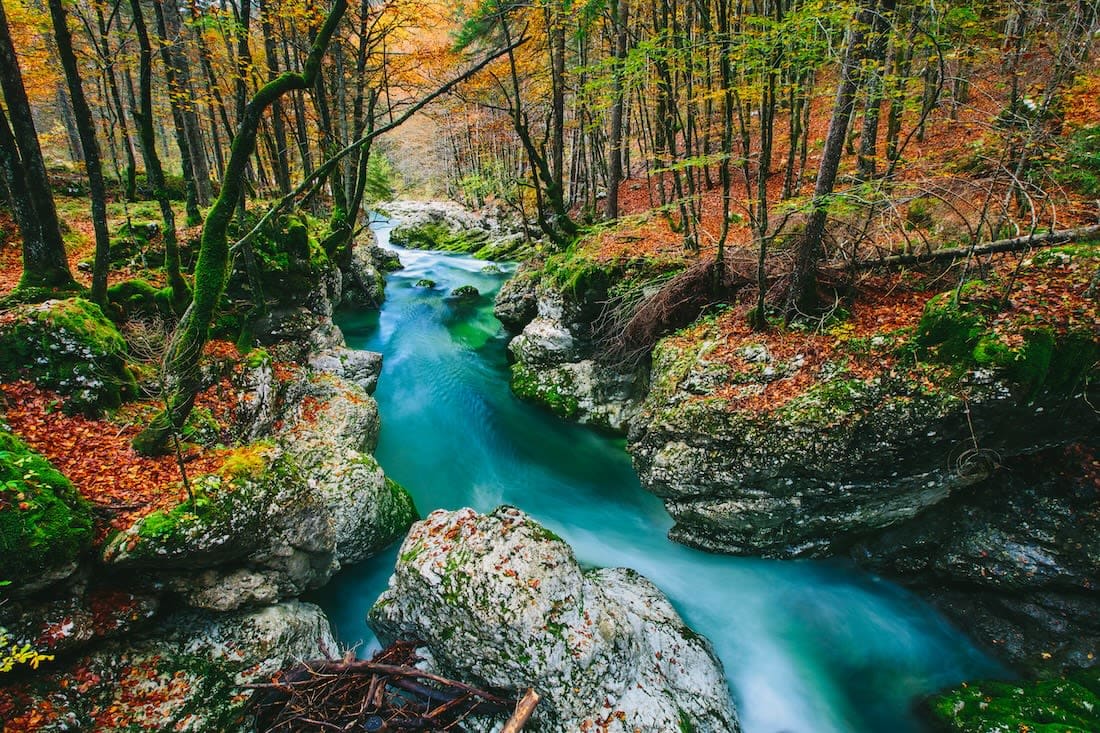
Mostnice Gorge
 Highlight of Excursion to Lake Bohinj
Highlight of Excursion to Lake BohinjTake an easy hike to see the amazing natural sculptures of Mostnica Gorge.
Mostnica Gorge offers a relaxed hiking experience through a stunning landscape carved by the Mostnica River, featuring unique rock formations and lush greenery. It's only about 2 miles (3km) roundtrip, but if you've got the energy and time, you can hike another 2.5 miles (4km) through a gorgeous Alpine valley to the Mostnica Waterfall.

Savica Waterfall
 Highlight of Excursion to Lake Bohinj
Highlight of Excursion to Lake BohinjHike to the majestic Savica Waterfall, a jewel of the Julian Alps.
Savica Waterfall, easily accessible by a short but steep hike, is a magnificent sight. The water dramatically bursts out from an underground karst cave within the mountainside and cascades dramatically into a clear pool, set against a backdrop of dense forests.
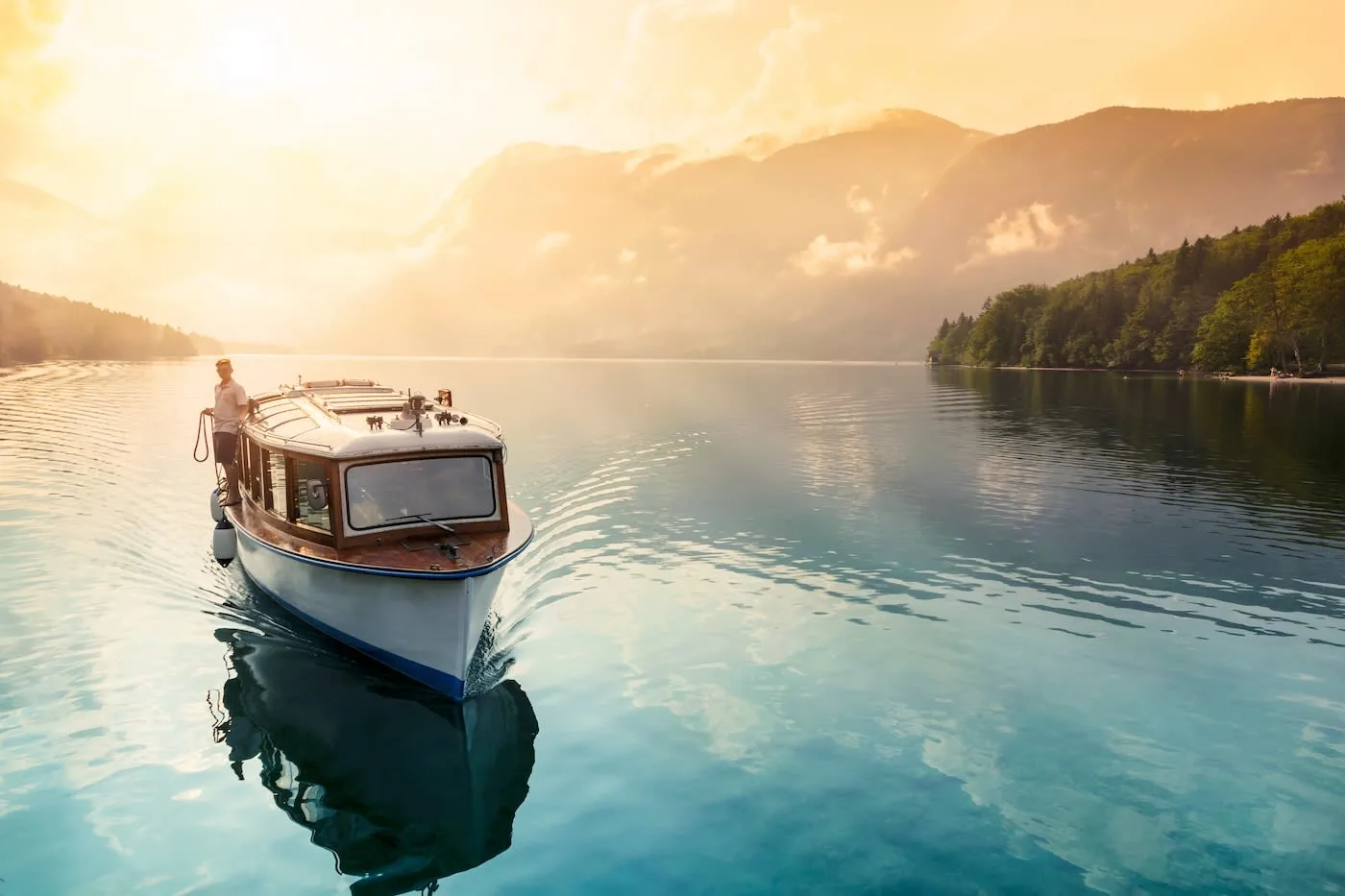
Bohinj Stone Bridge and Boat Docks
 Highlight of Excursion to Lake Bohinj
Highlight of Excursion to Lake BohinjStroll, sail, or soak in the beauty of Lake Bohinj's enchanting waters.
Lake Bohinj, is overlooked by towering mountains and its shore is hugged by deep green forests. The atmosphere is especially serene near the visitor center, where a stone bridge leads to the white church of St. John the Baptist. From the bridge you'll enjoy a stunning view of the lake. You can walk further along the shores, take a quick dip, rent a boat, or enjoy a scenic cruise on an electronic boat tour.
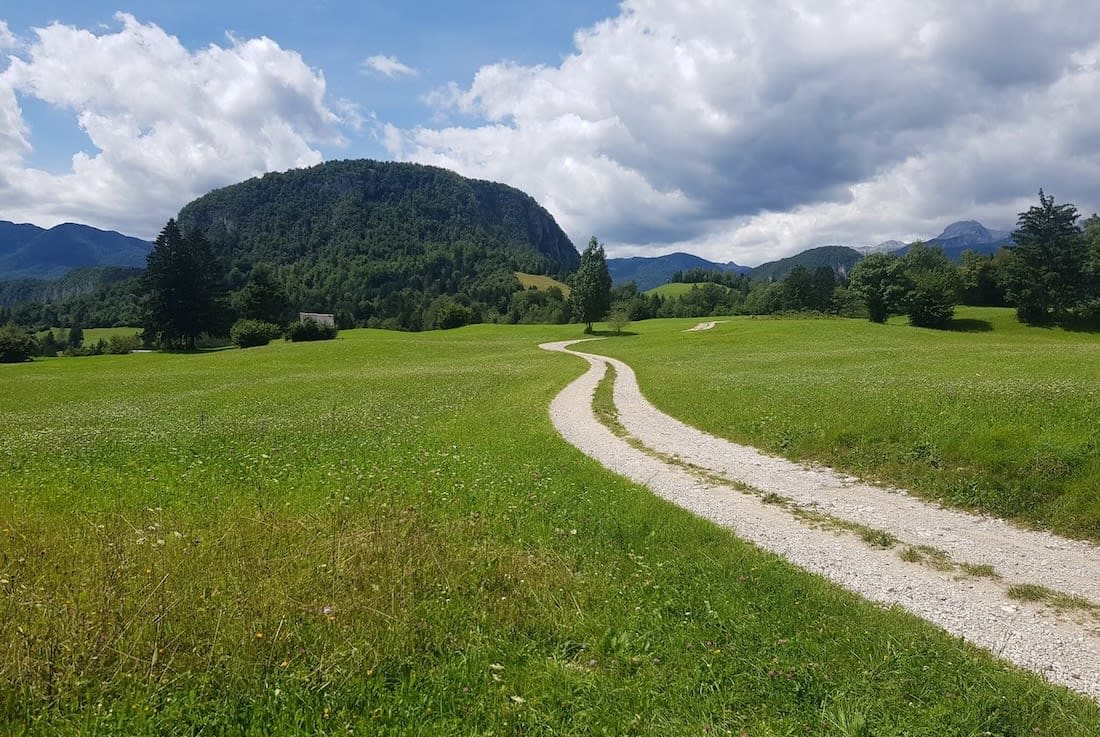
Bohinj Valley Cycling Path
 Highlight of Excursion to Lake Bohinj
Highlight of Excursion to Lake BohinjPedal through breathtaking valleys and over Alpine foothills.
Cycle through the Bohinj Valley, where a well-maintained cycling path takes you along the shore of the lake, through charming villages, over Alpine foothills and pastures, and alongside the clear emerald waters of the Sava Bohinjka River. With much of the path relatively flat and paved, you do not need to be in peak condition to enjoy this trip, although at some points you may need to dismount and walk.

Sava Bohinjka River Rafting
 Highlight of Excursion to Lake Bohinj
Highlight of Excursion to Lake BohinjRide the exhilarating rapids of the Sava Bohinjka River
Experience the thrill of rafting on the Sava Bohinjka River, where the rushing waters have carved a path through stunning Alpine scenery, offering an exciting ride full of natural beauty. But not too exciting - even complete beginners can enjoy this voyage.

Mostnice Gorge
 Highlight of Excursion to Lake Bohinj
Highlight of Excursion to Lake BohinjTake an easy hike to see the amazing natural sculptures of Mostnica Gorge.
Mostnica Gorge offers a relaxed hiking experience through a stunning landscape carved by the Mostnica River, featuring unique rock formations and lush greenery. It's only about 2 miles (3km) roundtrip, but if you've got the energy and time, you can hike another 2.5 miles (4km) through a gorgeous Alpine valley to the Mostnica Waterfall.

Savica Waterfall
 Highlight of Excursion to Lake Bohinj
Highlight of Excursion to Lake BohinjHike to the majestic Savica Waterfall, a jewel of the Julian Alps.
Savica Waterfall, easily accessible by a short but steep hike, is a magnificent sight. The water dramatically bursts out from an underground karst cave within the mountainside and cascades dramatically into a clear pool, set against a backdrop of dense forests.

Bohinj Stone Bridge and Boat Docks
 Highlight of Excursion to Lake Bohinj
Highlight of Excursion to Lake BohinjStroll, sail, or soak in the beauty of Lake Bohinj's enchanting waters.
Lake Bohinj, is overlooked by towering mountains and its shore is hugged by deep green forests. The atmosphere is especially serene near the visitor center, where a stone bridge leads to the white church of St. John the Baptist. From the bridge you'll enjoy a stunning view of the lake. You can walk further along the shores, take a quick dip, rent a boat, or enjoy a scenic cruise on an electronic boat tour.

Bohinj Valley Cycling Path
 Highlight of Excursion to Lake Bohinj
Highlight of Excursion to Lake BohinjPedal through breathtaking valleys and over Alpine foothills.
Cycle through the Bohinj Valley, where a well-maintained cycling path takes you along the shore of the lake, through charming villages, over Alpine foothills and pastures, and alongside the clear emerald waters of the Sava Bohinjka River. With much of the path relatively flat and paved, you do not need to be in peak condition to enjoy this trip, although at some points you may need to dismount and walk.

Sava Bohinjka River Rafting
 Highlight of Excursion to Lake Bohinj
Highlight of Excursion to Lake BohinjRide the exhilarating rapids of the Sava Bohinjka River
Experience the thrill of rafting on the Sava Bohinjka River, where the rushing waters have carved a path through stunning Alpine scenery, offering an exciting ride full of natural beauty. But not too exciting - even complete beginners can enjoy this voyage.
prev
next

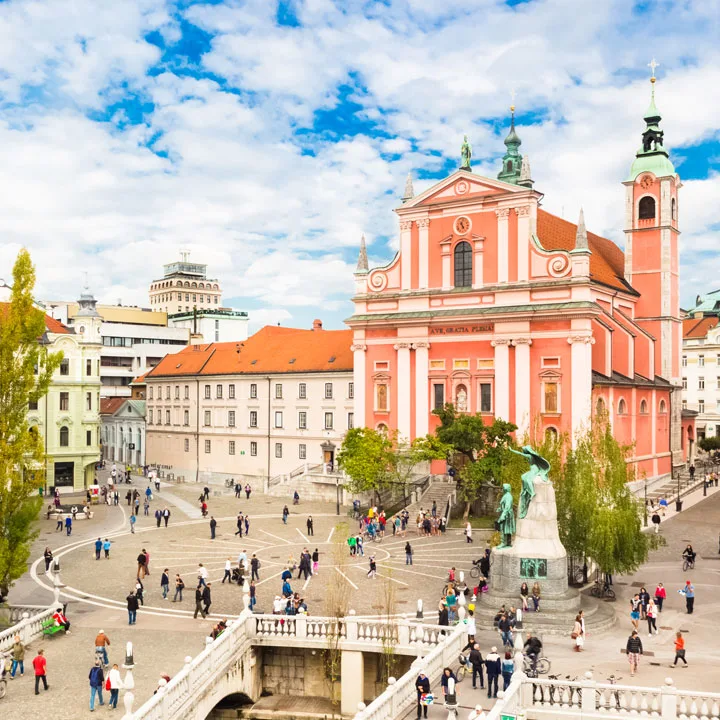
Day 7
Depart Ljubljana
View More
Day 7
Depart Ljubljana


Morning
Wander Ljubljana's Charming Old Town
Ljubljana may be one of the smallest and newest European capitals without world-famous monuments, but what it lacks in renown it more than compensates for in spark and self-confidence in comparison to the introspection of Europe's larger cities. Having suffered little trauma from the breakup of Yugoslavia other than the 'Ten-Day War' in 1991, the Slovenian capital is now an obviously prosperous and self-assured place that has successfully absorbed and integrated a whole variety of external influences from Austria, the Mediterranean and the Balkans over the centuries, and then adapted and tailored them to produce a unique distillation that's remarkable in such a small country. It's one of the continent's greenest and most liveable capitals, having been awarded by the EU with the coveted Green Capital of Europe title for 2016. Car traffic is restricted in the center as one street per year is pedestrianized, leaving the leafy banks of the emerald-green Ljubljanica River, which flows through the city's heart, free for pedestrians and cyclists. There's even a free taxi service in the car-free city center, which is a golfcart-like electric vehicle called Kavalir. It travels slowly around the pedestrianized streets and you can jump on and off anytime you like (it holds up to 5 people at a time). In summer, cafes and restaurants set up shaded seating along the river, making it one of the liveliest (and busiest) open-air dining areas around.

National Gallery and Other Museums & Fine Arts
Discover Slovenia's art and culture at the National Gallery and other nearby institutions.
Show More

Dragon Bridge & Market Colonnade
Take a picture with the iconic dragon statues on this pedestrian bridge.
Show More

Triple Bridge and Prešernov Square
Take a walk across the most famous sight in Ljubljana - the enchanting Triple Bridge.
Show More

Ursuline Church and Congress Square
Be sure to check out this beautiful church and spend some time in the surrounding square.
Show More

National Gallery and Other Museums & Fine Arts
Discover Slovenia's art and culture at the National Gallery and other nearby institutions.
Show More

Dragon Bridge & Market Colonnade
Take a picture with the iconic dragon statues on this pedestrian bridge.
Show More

Triple Bridge and Prešernov Square
Take a walk across the most famous sight in Ljubljana - the enchanting Triple Bridge.
Show More

Ursuline Church and Congress Square
Be sure to check out this beautiful church and spend some time in the surrounding square.
Show More
prev
next

Day 7
Depart Ljubljana
View More

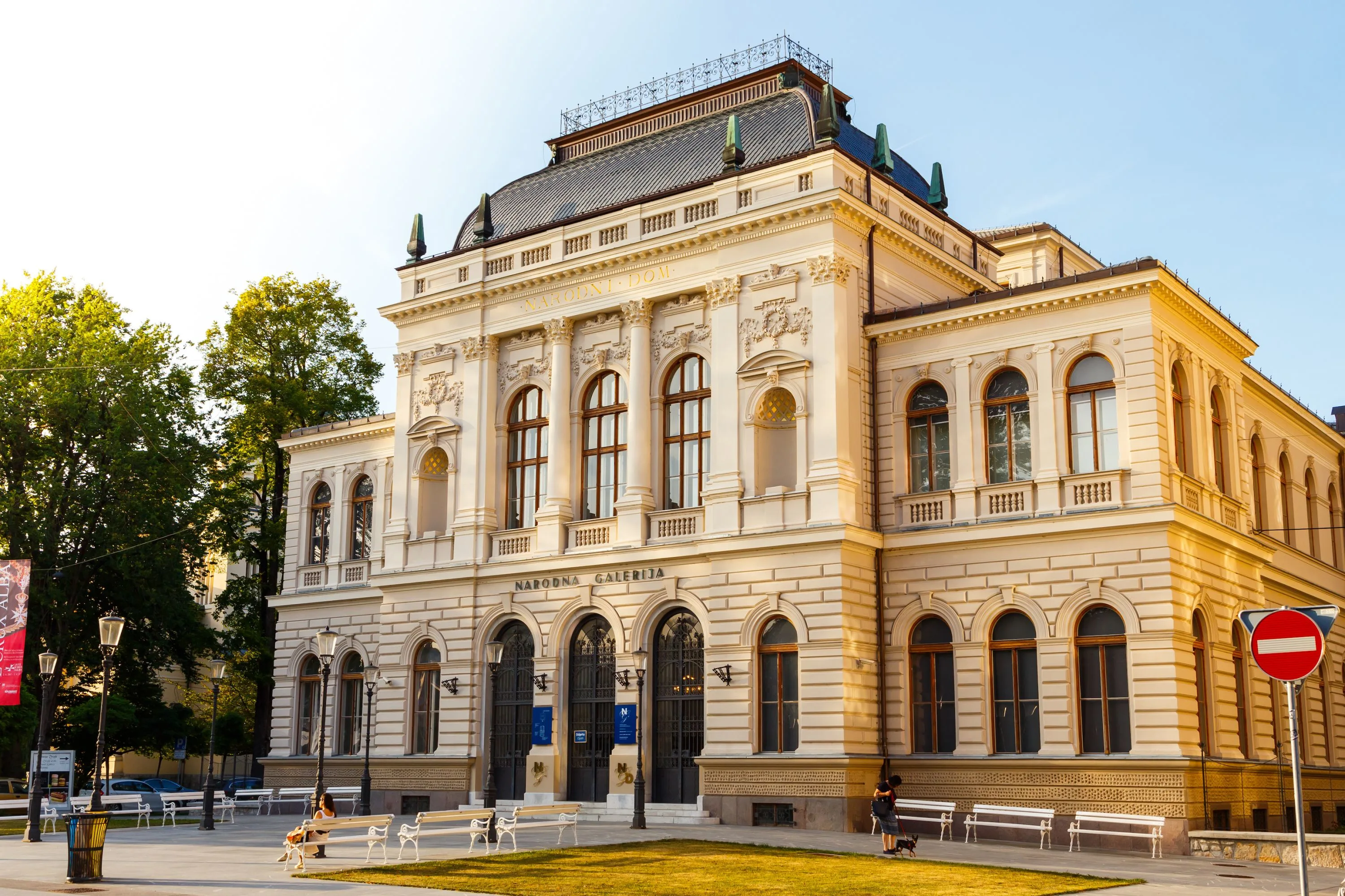
National Gallery and Other Museums & Fine Arts
 Highlight of Old Town
Highlight of Old TownDiscover Slovenia's art and culture at the National Gallery and other nearby institutions.
The National Gallery is the art gallery of Slovenia, with a permanent collection of art dating from the Middle Ages to the early 20th century. For the artistically minded, there's a cluster of institutions nearby that you should definitely check out, including the horse-shoe shaped Opera House, and the Museum of Modern Art, which picks up where the National Gallery leaves off, including exhibits from the influential Neue Slowenische Kunst (New Slovene Art) movement of the mid-1980s. Very close by on Prešernova cesta is the building that houses both the National Museum and the Natural History Museum; it's at the latter that you'll find an almost complete 20,000-year-old skeleton of a mammoth found near Kamnik in 1938. The city's main public park, Tivoli Park, opens up just across the road from the Museum of Modern Art.
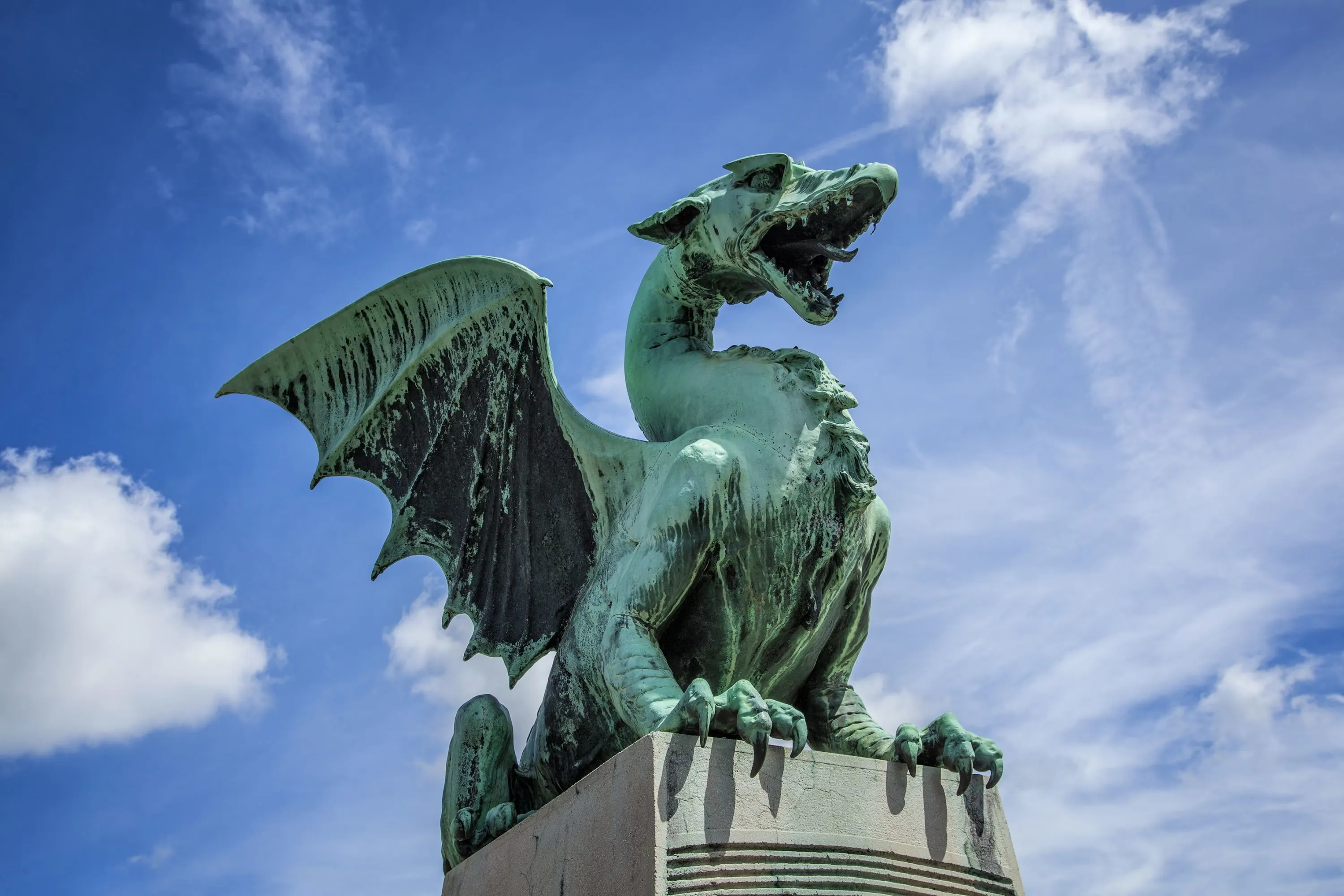
Dragon Bridge & Market Colonnade
 Highlight of Old Town
Highlight of Old TownTake a picture with the iconic dragon statues on this pedestrian bridge.
The bridge is a beautiful piece of Secessionist architecture with four carved, spitting, feisty-tailed dragons (the city symbol) sitting atop chunky pylons at each corner of the bridge. Just next to the bridge you'll discover the Market Colonnade, an elongated, gently curving pavilion sheltering a veritable smorgasbord of lovely food shops and a downstairs fish market. The colonnade runs along the length of the riverbank all the way to the Triple Bridge.
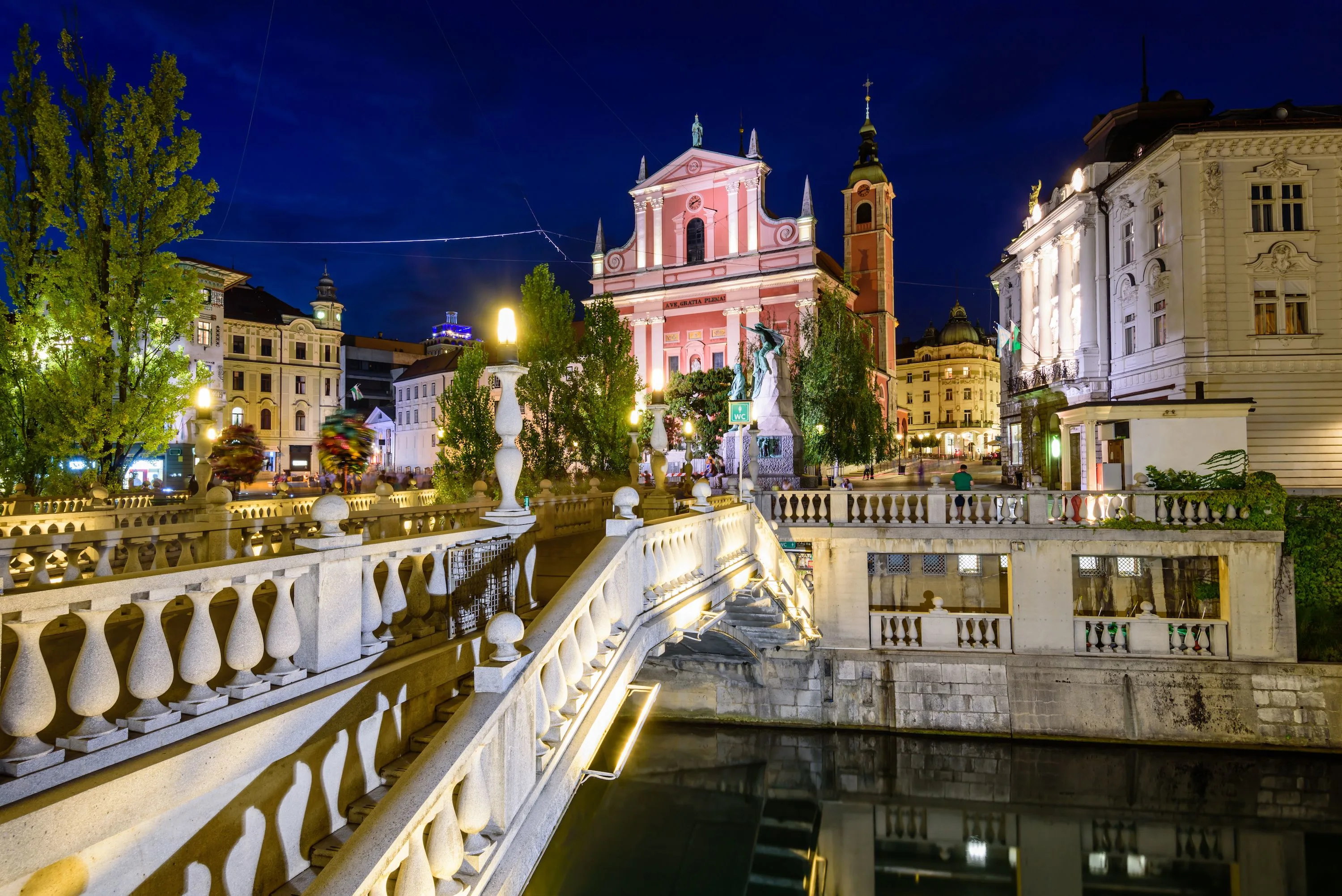
Triple Bridge and Prešernov Square
 Highlight of Old Town
Highlight of Old TownTake a walk across the most famous sight in Ljubljana - the enchanting Triple Bridge.
The bridge is a brilliant piece of architecture and the city's most photographed landmark. To get an idea of how 'green' and sustainable the city has become the Triple Bridge very recently still had vehicular traffic coursing over its beautifully balustraded concourse. The 'triple' in the bridge is the result of national architect Jože Plečnik's decision in 1929 to broaden the existing central bridge dating from 1842 with two lateral footbridges, in order to make access to the oldest part of town on the right bank of the river safer and more convenient for pedestrians; to top it off, he added the Renaissance balustrades, based on the rising bridges of Venice's waterways, and rows of lamps, all of which gives the bridge a magical appearance at night. Geographically and socially, the pulsing heart of the city is Prešernov trg, a small and animated square on the left bank of the river next to the Triple Bridge. It is named after France Prešeren, the national poet, whose statue also adorns the square. The square is Ljubljana's main point of reference where open-air cafes do a brisk trade, and street performers and musicians keep the tourist crowds entertained during the summer months.
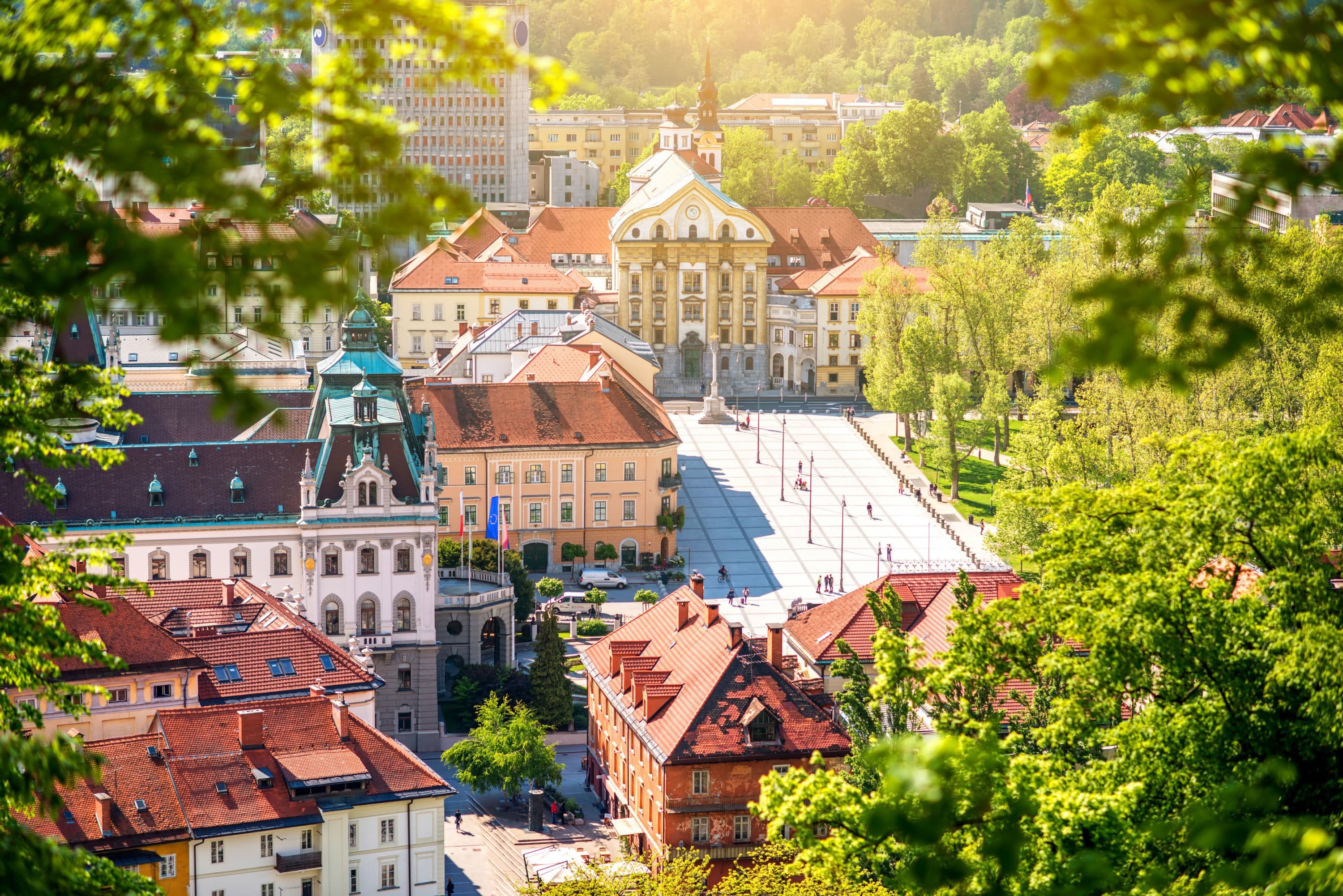
Ursuline Church and Congress Square
 Highlight of Old Town
Highlight of Old TownBe sure to check out this beautiful church and spend some time in the surrounding square.
You are sure to see lots of churches on any trip to Europe, but the Ursuline Church of the Holy Trinity is certainly not like most other Baroque churches from the 1700's. With its irregular roof line, six columns surrounding the entrance, and many windows, the facade looks more like that of a palace than a typical Baroque church. The beautiful white interior is also unusual in that it is not painted, although there are several ornate altars and paintings to provide some color. The church is located on Congres Square, i.e. Kongresni trg. It is a popular, grassy park shaded by leafy trees and fringed by more architectural gems. It's also a good spot to come to in the evenings for quieter repast if you wish to avoid the crowds thronging both sides of the riverbank. On one corner of the square is Kazina (Casino), a smart Classicist mansion built in 1837 for entertaining the Ljubljana elite. Cafe Zvezda housed inside Kazina is said to serve up some of the best cakes and desserts in town. The Slovene Philharmonic Hall hosts one of the oldest musical institutions in Europe, which was one of the foremost in the Hapsburg Empire. Its honorary members included Haydn, Beethoven, and Mozart, and Gustav Mahler was the in-house conductor in 1881-82. Next door is the huge neo-Renaissance university building.

National Gallery and Other Museums & Fine Arts
 Highlight of Old Town
Highlight of Old TownDiscover Slovenia's art and culture at the National Gallery and other nearby institutions.
The National Gallery is the art gallery of Slovenia, with a permanent collection of art dating from the Middle Ages to the early 20th century. For the artistically minded, there's a cluster of institutions nearby that you should definitely check out, including the horse-shoe shaped Opera House, and the Museum of Modern Art, which picks up where the National Gallery leaves off, including exhibits from the influential Neue Slowenische Kunst (New Slovene Art) movement of the mid-1980s. Very close by on Prešernova cesta is the building that houses both the National Museum and the Natural History Museum; it's at the latter that you'll find an almost complete 20,000-year-old skeleton of a mammoth found near Kamnik in 1938. The city's main public park, Tivoli Park, opens up just across the road from the Museum of Modern Art.

Dragon Bridge & Market Colonnade
 Highlight of Old Town
Highlight of Old TownTake a picture with the iconic dragon statues on this pedestrian bridge.
The bridge is a beautiful piece of Secessionist architecture with four carved, spitting, feisty-tailed dragons (the city symbol) sitting atop chunky pylons at each corner of the bridge. Just next to the bridge you'll discover the Market Colonnade, an elongated, gently curving pavilion sheltering a veritable smorgasbord of lovely food shops and a downstairs fish market. The colonnade runs along the length of the riverbank all the way to the Triple Bridge.

Triple Bridge and Prešernov Square
 Highlight of Old Town
Highlight of Old TownTake a walk across the most famous sight in Ljubljana - the enchanting Triple Bridge.
The bridge is a brilliant piece of architecture and the city's most photographed landmark. To get an idea of how 'green' and sustainable the city has become the Triple Bridge very recently still had vehicular traffic coursing over its beautifully balustraded concourse. The 'triple' in the bridge is the result of national architect Jože Plečnik's decision in 1929 to broaden the existing central bridge dating from 1842 with two lateral footbridges, in order to make access to the oldest part of town on the right bank of the river safer and more convenient for pedestrians; to top it off, he added the Renaissance balustrades, based on the rising bridges of Venice's waterways, and rows of lamps, all of which gives the bridge a magical appearance at night. Geographically and socially, the pulsing heart of the city is Prešernov trg, a small and animated square on the left bank of the river next to the Triple Bridge. It is named after France Prešeren, the national poet, whose statue also adorns the square. The square is Ljubljana's main point of reference where open-air cafes do a brisk trade, and street performers and musicians keep the tourist crowds entertained during the summer months.

Ursuline Church and Congress Square
 Highlight of Old Town
Highlight of Old TownBe sure to check out this beautiful church and spend some time in the surrounding square.
You are sure to see lots of churches on any trip to Europe, but the Ursuline Church of the Holy Trinity is certainly not like most other Baroque churches from the 1700's. With its irregular roof line, six columns surrounding the entrance, and many windows, the facade looks more like that of a palace than a typical Baroque church. The beautiful white interior is also unusual in that it is not painted, although there are several ornate altars and paintings to provide some color. The church is located on Congres Square, i.e. Kongresni trg. It is a popular, grassy park shaded by leafy trees and fringed by more architectural gems. It's also a good spot to come to in the evenings for quieter repast if you wish to avoid the crowds thronging both sides of the riverbank. On one corner of the square is Kazina (Casino), a smart Classicist mansion built in 1837 for entertaining the Ljubljana elite. Cafe Zvezda housed inside Kazina is said to serve up some of the best cakes and desserts in town. The Slovene Philharmonic Hall hosts one of the oldest musical institutions in Europe, which was one of the foremost in the Hapsburg Empire. Its honorary members included Haydn, Beethoven, and Mozart, and Gustav Mahler was the in-house conductor in 1881-82. Next door is the huge neo-Renaissance university building.
prev
next

What's Included In Your Trip

Pre-Paid Tours and Activities:
- Walking Tour of Split Old Town & Diocletian's Palace
- Full Day Small Group trip to Lake Bled, Postojna Cave and Predjama Castle

Accommodation:
- 4 nights at a hotel of your choice in Split
- 4 nights at a hotel of your choice in Ljubljana

Go Real Travel Mobile App:
- Itinerary Plan & Reservations Info
- Points of Interest
- Detailed Travel Information
- Maps & Directions
Other Trips You May Like

8 Days
From$1585USD

10 Days
From$1940USD

10 Days
From$1749USD
From the Adriatic to Europe's Heart: Exploring Croatia, Budapest, and Prague

Croatia, Hungary, Czech Republic
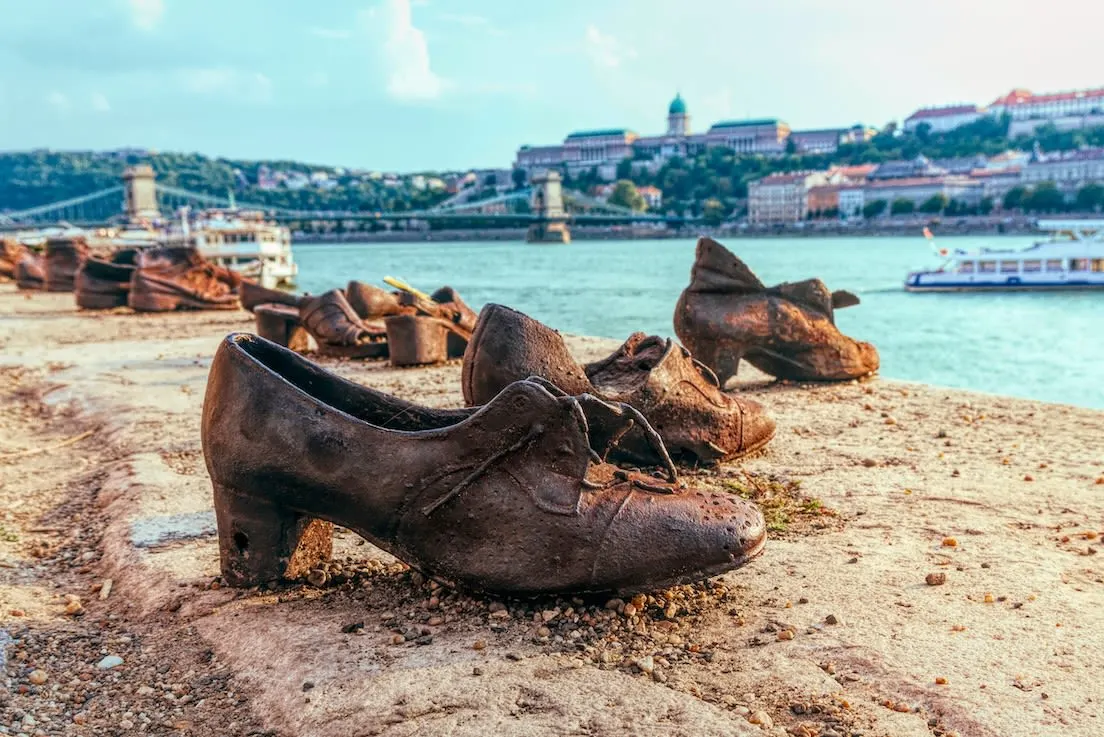
4 Days
From$897USD

7 Days
From$1390USD

10 Days
From$2239USD
Croatia & Slovenia: 10 Days of Historic Coastline, Waterfalls & Mountains

Croatia, Slovenia
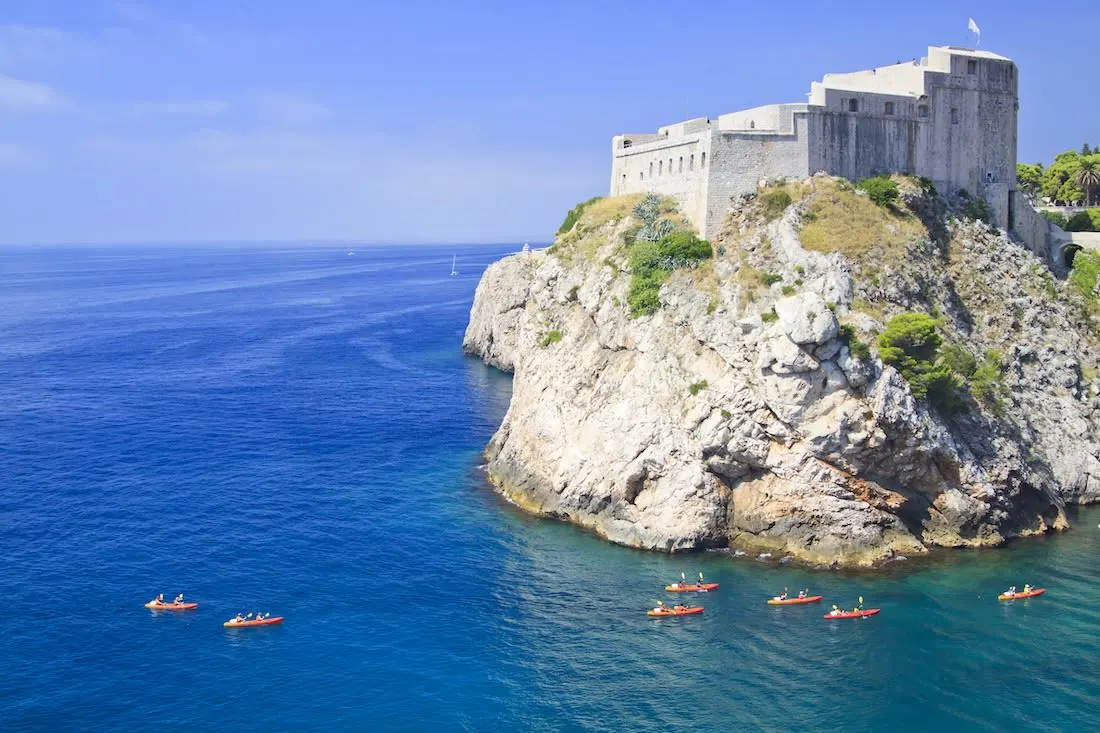
14 Days
From$3495USD

7 Days
From$699USD

10 Days
From$2750USD

8 Days
From$1585USD

10 Days
From$1940USD

10 Days
From$1749USD
From the Adriatic to Europe's Heart: Exploring Croatia, Budapest, and Prague

Croatia, Hungary, Czech Republic

4 Days
From$897USD

7 Days
From$1390USD

10 Days
From$2239USD
Croatia & Slovenia: 10 Days of Historic Coastline, Waterfalls & Mountains

Croatia, Slovenia

14 Days
From$3495USD

7 Days
From$699USD

10 Days
From$2750USD
prev
next
Featured Blogs
prev
next
Our Customers Say It Best
Otto Chuy, Los Angeles, California
I am still surprised how everything worked as planned, without a hitch. All instructions in your itinerary were precise and correct. Your suggestions and comments in each of the locations we went to were very helpful. All your guides, without exception, were wonderful and exactly on time. 

Kathy Mongeau, Ottawa, Ontario
My sister, Ann Ibberson, and I have been back home for a few weeks now and still go on and on about our fabulous trip. We were just blown away in every respect. Given the fact that we only had 1 ½ weeks, you had everything arranged for us so efficiently and your contacts who we dealt with for transfers, tours, hotels were extremely professional and personable. Things could not have gone better. 

Clive Andrew, Brisbane, Queensland
Just a quick note to let you know that I am back home now after probably the best overseas holiday that I have ever had, in no small part due to your very capable organization booking of hotels, tours, & trains. There was just nothing that went wrong with the timings etc. 

Malini Dutta, Boston, Massachusetts
We can't thank you enough for the detailed plans, maps, and suggestions. It really felt that someone was holding our hands and showing us around. We had all the excitement of discovering foreign lands, with none of the problems that can happen while negotiating unfamiliar places. In fact, all the cities felt like home within a few hours of arriving and exploring. 

Bev and Mark Frankel, Williamsburg, Virginia
We could not be more pleased with Go Real Travel! You took the guess work out of things like public transport but still managed to allow us the freedom to tour as we wanted. Our guides were exceptional and every time I saw a Viking Cruise tour of 25 people, I realized the quality experience we were getting with Go Real. 

Marianne Strydom, Paarl, South Africa
I just wanted to thank you for organizing an amazing trip for me – I packed in so much in such a short period of time and everything was just perfect. The way you do things makes it possible to really get to know the destination, which for me as a travel agent could not have been better. 

Otto Chuy, Los Angeles, California
I am still surprised how everything worked as planned, without a hitch. All instructions in your itinerary were precise and correct. Your suggestions and comments in each of the locations we went to were very helpful. All your guides, without exception, were wonderful and exactly on time. 

Kathy Mongeau, Ottawa, Ontario
My sister, Ann Ibberson, and I have been back home for a few weeks now and still go on and on about our fabulous trip. We were just blown away in every respect. Given the fact that we only had 1 ½ weeks, you had everything arranged for us so efficiently and your contacts who we dealt with for transfers, tours, hotels were extremely professional and personable. Things could not have gone better. 

Clive Andrew, Brisbane, Queensland
Just a quick note to let you know that I am back home now after probably the best overseas holiday that I have ever had, in no small part due to your very capable organization booking of hotels, tours, & trains. There was just nothing that went wrong with the timings etc. 

Malini Dutta, Boston, Massachusetts
We can't thank you enough for the detailed plans, maps, and suggestions. It really felt that someone was holding our hands and showing us around. We had all the excitement of discovering foreign lands, with none of the problems that can happen while negotiating unfamiliar places. In fact, all the cities felt like home within a few hours of arriving and exploring. 

Bev and Mark Frankel, Williamsburg, Virginia
We could not be more pleased with Go Real Travel! You took the guess work out of things like public transport but still managed to allow us the freedom to tour as we wanted. Our guides were exceptional and every time I saw a Viking Cruise tour of 25 people, I realized the quality experience we were getting with Go Real. 

Marianne Strydom, Paarl, South Africa
I just wanted to thank you for organizing an amazing trip for me – I packed in so much in such a short period of time and everything was just perfect. The way you do things makes it possible to really get to know the destination, which for me as a travel agent could not have been better. 



Explore cities in more detail
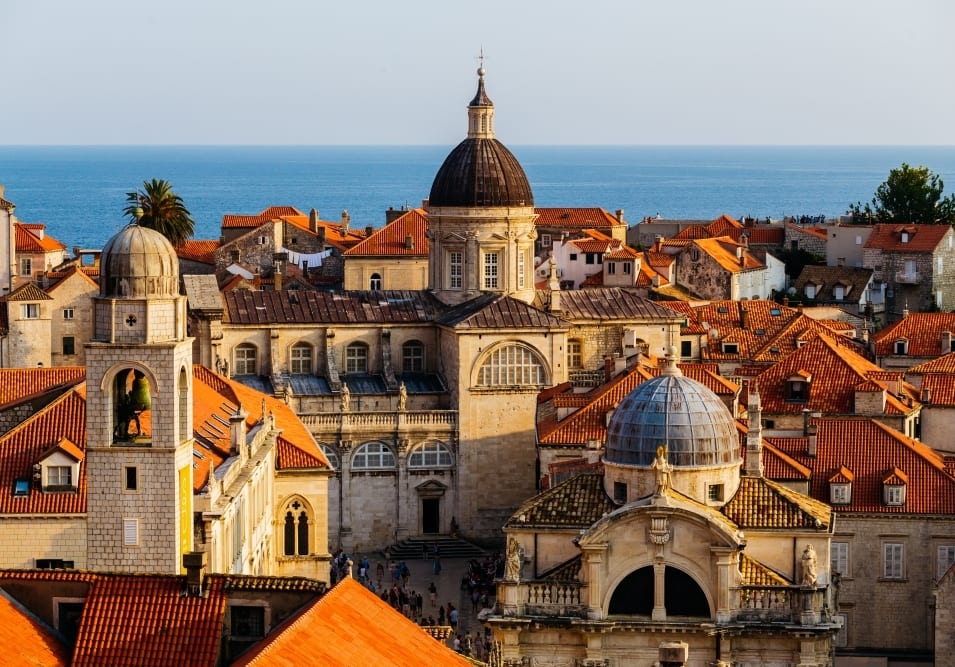
Dubrovnik
Situated in southern Croatia on the Adriatic Sea, Dubrovnik is famous for many different reasons. Everywhere you look in Dubrovnik is a stunning view. Known for its beautiful Old Town and ancient walls, Dubrovnik is a resilient city that deserves its nickname as the pearl of the Adriatic. Strolling through the limestone streets lined with baroque buildings, alongside the animated locals, will inspire you to keep exploring. The city walls offer spectacular views of the red rooftops in Old Town and the shimmering blues of the Adriatic Sea. After a tiring trek in the hot Croatian sun, cool off at one of Dubrovnik’s divine pebbly beaches and go swimming in the sea. The best way to end the day is a visit to Stradun, the main street, to pop into one of the cafes or restaurants, and relax during a delicious meal of Croatian specialties and wine.
Read More
Learn About Dubrovnik
Build Dubrovnik Trip
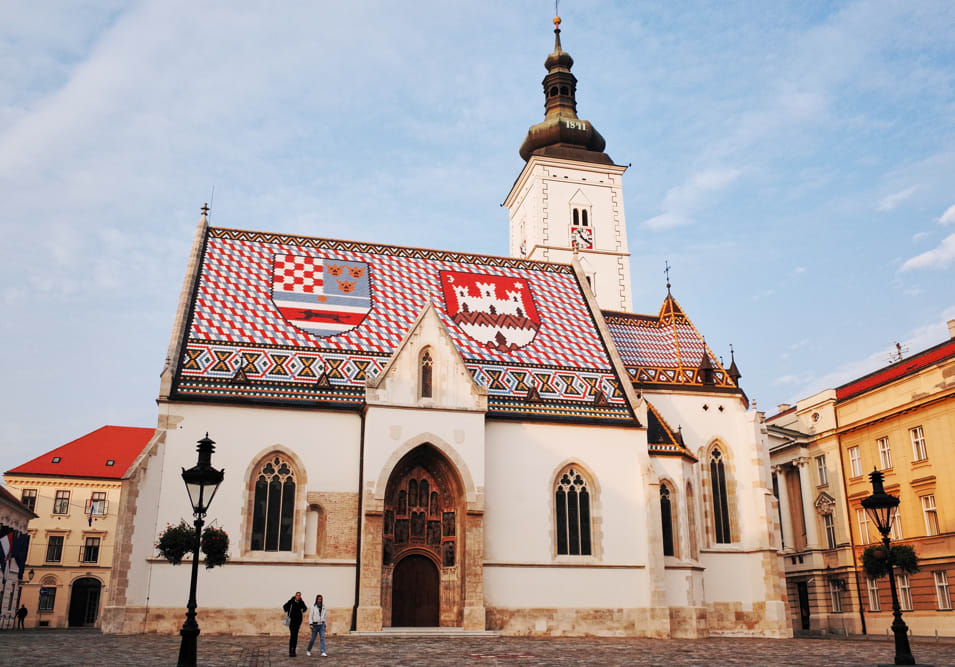
Zagreb
Zagreb is Croatia's biggest city, known for its cultural roots and vibrant street life. The city's rich history is evident in the mix of different architectural styles, including secessionist, classical, neo-Baroque, neo-Gothic, and art deco. Even the seemingly lackluster parts of town have been brought to life by street artists. At first glance, the red rooftops and cobblestone streets might seem reminiscent of other popular European cities, but you'll soon learn that Zagreb has a spirit all its own. Everywhere you go, you'll be rubbing elbows with lively locals hanging out at open cafes, gardens, and parks, or rushing to the next event on the calendar. Thanks to the spacious pedestrian zones attracting locals, expats, and visitors alike, socializing with new people and finding something unexpected to do is effortless. At night, the youth of the city becomes even more exuberant. With plenty of jazz clubs, beer halls, cocktail bars, and casinos, there's always something to do because the city never sleeps.
Read More
Learn About Zagreb
Build Zagreb Trip
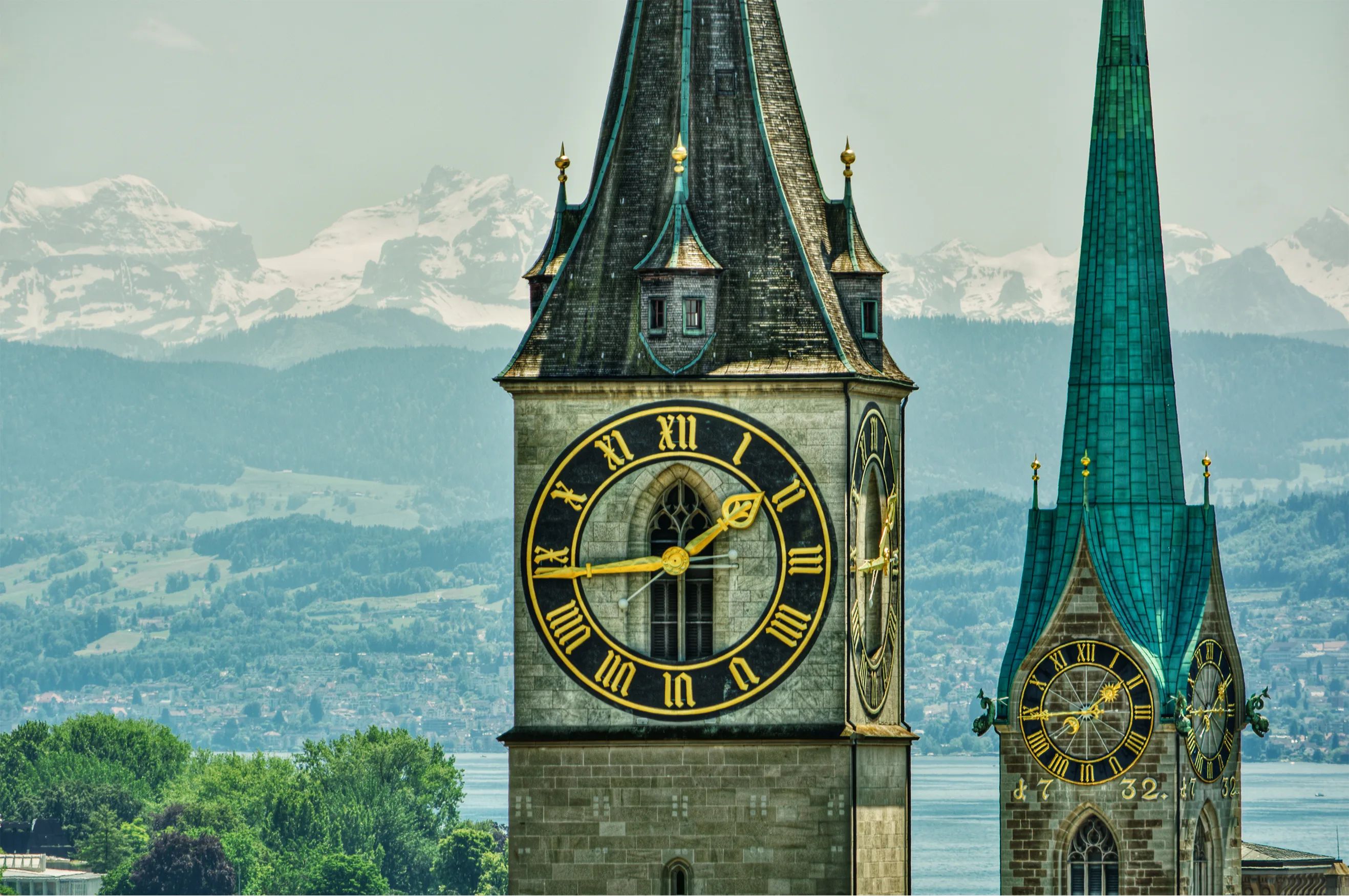
Zurich
Zurich is Switzerland’s biggest city, located in the center of the country’s German-speaking region. It’s this location, superbly connected to almost everywhere else by train and close to an international airport, that makes Zurich an obvious destination for tourists. Well, that’s one of the reasons. There’s also the city’s bevy of bars and restaurants, the lakeside views, and stunning architecture around every corner.Take a stroll down the Bahnhofstrasse, a street known around the world for its unrivaled shopping. Weave through crowds of shoppers as you pass rows of world-famous and exclusive brands. Zurich is a small city, but that just makes it easier to get around. Lindenhof Hill, a slight rise of land in the center, offers views across all of the town. Among the city’s most striking features are the Grossmünster towers, which can also be climbed. This is a proud, sophisticated, and elegant city.
Read More
Learn About Zurich
Build Zurich Trip
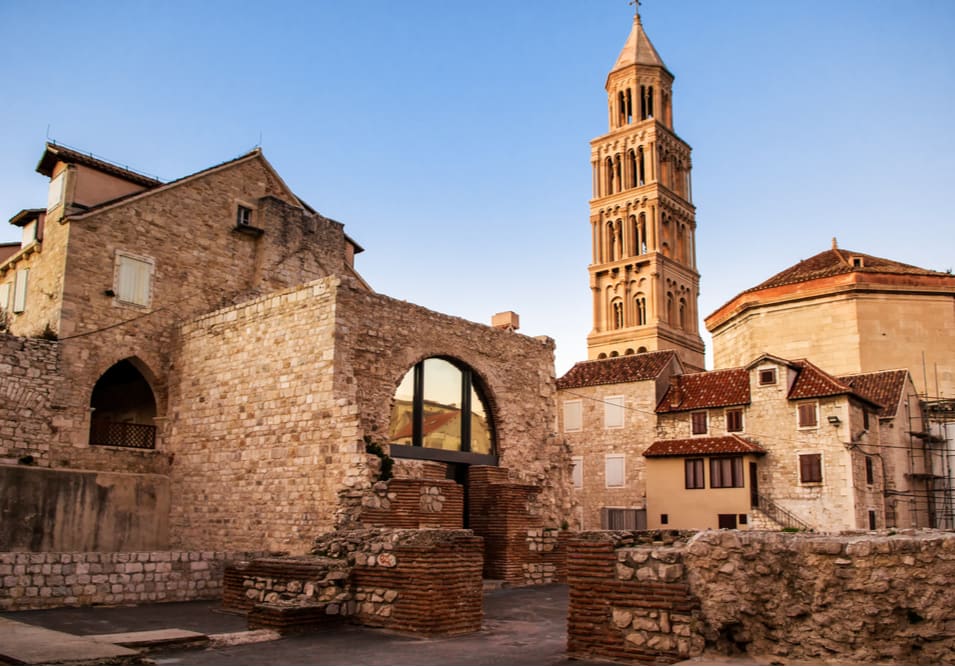
Split
A lively port city situated between mountains and sea, Split is one of Croatia's most visited—and most beautiful— cities. With historical monuments sprinkled across the Dalmatian coastline and trendy cafes and shops popping up within the ancient walls of the city center, it's easy to see why this extraordinary city is such a popular travel destination. Split is always abuzz with visitors and locals alike enjoying a seafood meal outside, relaxing on the beach, or boating on the Adriatic. The weather is almost always beautiful, so the streets tend to be crowded with people looking to take advantage of the sunshine. A walk through Split feels like a journey through past centuries. The coastal town showcases modern architecture next to structures like Diocletian's Palace, which date back to the times of the Roman Empire. In fact, Split's Old Town resides within the walls of Diocletian's Palace. As you stroll through the narrow marble streets, you'll be amazed by the number of modern restaurants and bars populating this ancient area. It's easy to pack plenty of culture, history, activity, and leisure all into one amazing trip.
Read More
Learn About Split
Build Split Trip
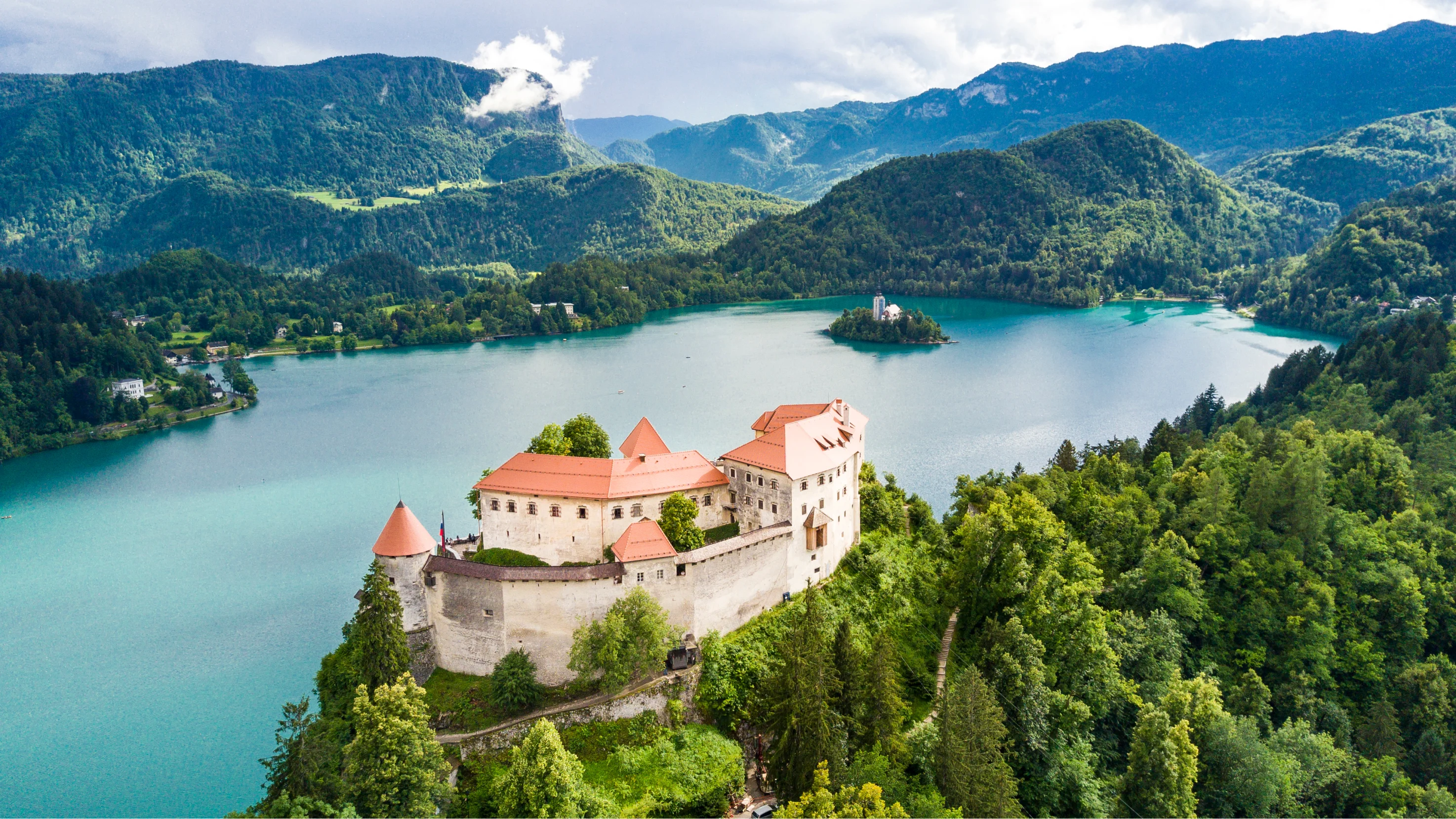
Ljubljana
One of Europe's smallest capitals, Ljubljana is still Slovenia's biggest city. What it lacks in size, though, it more than makes up for in charm, beauty, and personality. It's also one of Europe's greenest cities and is perfect for a bike ride or a leisurely walk. With plenty of open spaces, gorgeous architecture, and cultural treats, it's easy to fill the time here. The Tromostovje, or Triple Bridge, is one of Ljubljana's main attractions, connecting the Old Town with the new. Excellent pizza can be found here, and a series of bars and cafes are dotted throughout the town and along the banks of the river. The anarchic Metelkova City reveals Ljubljana's grittier side, with art exhibitions and performances housed in a disused military barracks. Ljubljana is charm and beauty compressed neatly into a small and pretty space.
Read More
Learn About Ljubljana
Build Ljubljana Trip
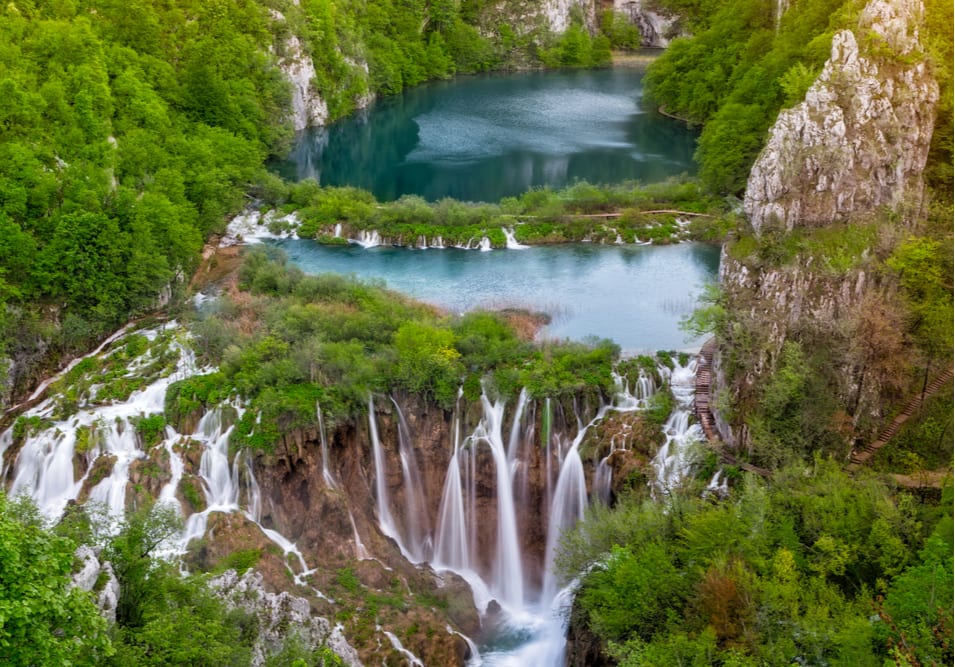
Plitvice Lakes
Plitvice Lakes in Croatia is a national park featuring 16 interconnected lakes. It was once one of Yugoslavia’s most popular tourist hotspots, and today this UNESCO World Heritage Site attracts visitors from all over the world. The lakes’ main draw is their sublime natural beauty. Turquoise pools, joined by a series of waterfalls and cascades, are set like jewels within the park’s lush green hillsides. Wooden hiking paths snake between the lakes and along the shores. Plitvice hosts an impressive variety of wildlife, from wild boars and dormice to hundreds of butterfly species, and countless types of birds. The park’s most famous resident is the elusive brown bear. Occupied by hostile forces during the Croatian War of Independence, this park’s history isn’t all paradisical. However, it’s easy to forget that troubled past when spending time by the lakes today. Today, Plitvice’s mood is all about peace, relaxation, and appreciation of stunning natural beauty.
Read More
Learn About Plitvice Lakes
Build Plitvice Lakes Trip

Dubrovnik
Situated in southern Croatia on the Adriatic Sea, Dubrovnik is famous for many different reasons. Everywhere you look in Dubrovnik is a stunning view. Known for its beautiful Old Town and ancient walls, Dubrovnik is a resilient city that deserves its nickname as the pearl of the Adriatic. Strolling through the limestone streets lined with baroque buildings, alongside the animated locals, will inspire you to keep exploring. The city walls offer spectacular views of the red rooftops in Old Town and the shimmering blues of the Adriatic Sea. After a tiring trek in the hot Croatian sun, cool off at one of Dubrovnik’s divine pebbly beaches and go swimming in the sea. The best way to end the day is a visit to Stradun, the main street, to pop into one of the cafes or restaurants, and relax during a delicious meal of Croatian specialties and wine.
Read More
Learn About Dubrovnik
Build Dubrovnik Trip

Zagreb
Zagreb is Croatia's biggest city, known for its cultural roots and vibrant street life. The city's rich history is evident in the mix of different architectural styles, including secessionist, classical, neo-Baroque, neo-Gothic, and art deco. Even the seemingly lackluster parts of town have been brought to life by street artists. At first glance, the red rooftops and cobblestone streets might seem reminiscent of other popular European cities, but you'll soon learn that Zagreb has a spirit all its own. Everywhere you go, you'll be rubbing elbows with lively locals hanging out at open cafes, gardens, and parks, or rushing to the next event on the calendar. Thanks to the spacious pedestrian zones attracting locals, expats, and visitors alike, socializing with new people and finding something unexpected to do is effortless. At night, the youth of the city becomes even more exuberant. With plenty of jazz clubs, beer halls, cocktail bars, and casinos, there's always something to do because the city never sleeps.
Read More
Learn About Zagreb
Build Zagreb Trip

Zurich
Zurich is Switzerland’s biggest city, located in the center of the country’s German-speaking region. It’s this location, superbly connected to almost everywhere else by train and close to an international airport, that makes Zurich an obvious destination for tourists. Well, that’s one of the reasons. There’s also the city’s bevy of bars and restaurants, the lakeside views, and stunning architecture around every corner.Take a stroll down the Bahnhofstrasse, a street known around the world for its unrivaled shopping. Weave through crowds of shoppers as you pass rows of world-famous and exclusive brands. Zurich is a small city, but that just makes it easier to get around. Lindenhof Hill, a slight rise of land in the center, offers views across all of the town. Among the city’s most striking features are the Grossmünster towers, which can also be climbed. This is a proud, sophisticated, and elegant city.
Read More
Learn About Zurich
Build Zurich Trip

Split
A lively port city situated between mountains and sea, Split is one of Croatia's most visited—and most beautiful— cities. With historical monuments sprinkled across the Dalmatian coastline and trendy cafes and shops popping up within the ancient walls of the city center, it's easy to see why this extraordinary city is such a popular travel destination. Split is always abuzz with visitors and locals alike enjoying a seafood meal outside, relaxing on the beach, or boating on the Adriatic. The weather is almost always beautiful, so the streets tend to be crowded with people looking to take advantage of the sunshine. A walk through Split feels like a journey through past centuries. The coastal town showcases modern architecture next to structures like Diocletian's Palace, which date back to the times of the Roman Empire. In fact, Split's Old Town resides within the walls of Diocletian's Palace. As you stroll through the narrow marble streets, you'll be amazed by the number of modern restaurants and bars populating this ancient area. It's easy to pack plenty of culture, history, activity, and leisure all into one amazing trip.
Read More
Learn About Split
Build Split Trip

Ljubljana
One of Europe's smallest capitals, Ljubljana is still Slovenia's biggest city. What it lacks in size, though, it more than makes up for in charm, beauty, and personality. It's also one of Europe's greenest cities and is perfect for a bike ride or a leisurely walk. With plenty of open spaces, gorgeous architecture, and cultural treats, it's easy to fill the time here. The Tromostovje, or Triple Bridge, is one of Ljubljana's main attractions, connecting the Old Town with the new. Excellent pizza can be found here, and a series of bars and cafes are dotted throughout the town and along the banks of the river. The anarchic Metelkova City reveals Ljubljana's grittier side, with art exhibitions and performances housed in a disused military barracks. Ljubljana is charm and beauty compressed neatly into a small and pretty space.
Read More
Learn About Ljubljana
Build Ljubljana Trip

Plitvice Lakes
Plitvice Lakes in Croatia is a national park featuring 16 interconnected lakes. It was once one of Yugoslavia’s most popular tourist hotspots, and today this UNESCO World Heritage Site attracts visitors from all over the world. The lakes’ main draw is their sublime natural beauty. Turquoise pools, joined by a series of waterfalls and cascades, are set like jewels within the park’s lush green hillsides. Wooden hiking paths snake between the lakes and along the shores. Plitvice hosts an impressive variety of wildlife, from wild boars and dormice to hundreds of butterfly species, and countless types of birds. The park’s most famous resident is the elusive brown bear. Occupied by hostile forces during the Croatian War of Independence, this park’s history isn’t all paradisical. However, it’s easy to forget that troubled past when spending time by the lakes today. Today, Plitvice’s mood is all about peace, relaxation, and appreciation of stunning natural beauty.
Read More
Learn About Plitvice Lakes
Build Plitvice Lakes Trip
prev
next


 Map of Your Itinerary Route
Map of Your Itinerary Route
Zoom In to the cities to see your itinerary in more detail


 4.8
4.8 

